Search Result
Results for "
Arrhythmias
" in MedChemExpress (MCE) Product Catalog:
3
Biochemical Assay Reagents
20
Isotope-Labeled Compounds
| Cat. No. |
Product Name |
Target |
Research Areas |
Chemical Structure |
-
- HY-130335
-
|
MJ9067
|
Others
|
Cardiovascular Disease
|
|
Encainide (MJ9067) is an antiarrhythmic agent with class IC activity. Encainide has the potential for life-threatening ventricular arrhythmias, symptomatic ventricular arrhythmias and supraventricular arrhythmias research .
|
-
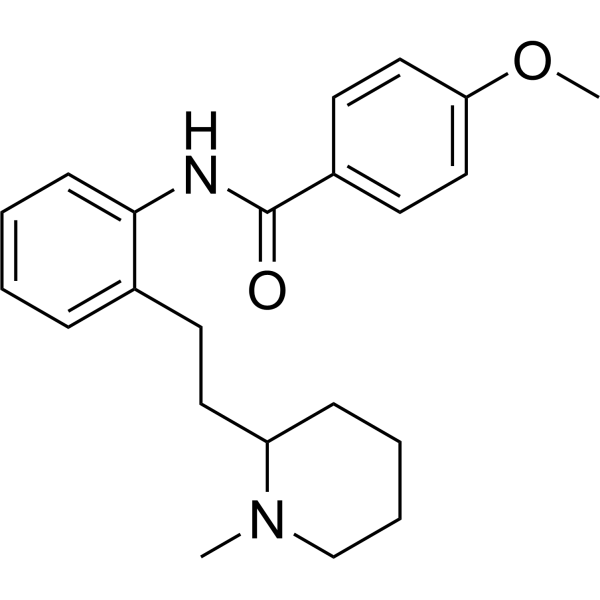
-
- HY-101750
-
|
|
Others
|
Cardiovascular Disease
|
|
Arrhythmias-Targeting Compound 1 is used in the research of arrhythmias, extracted from patent WO 2001028992 A2.
|
-
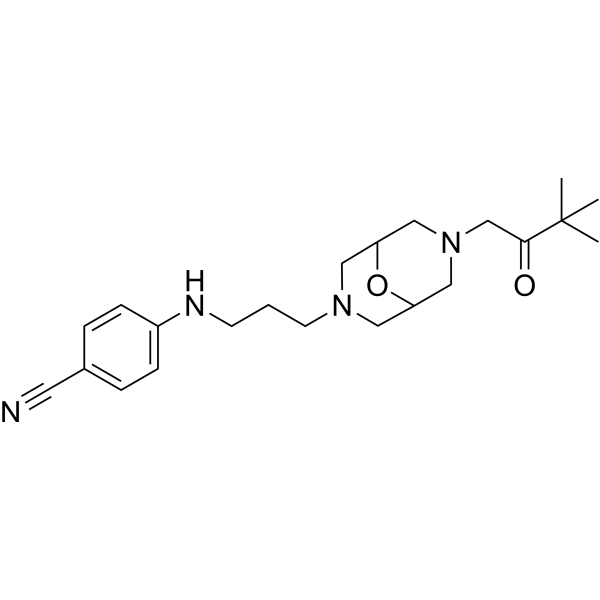
-
- HY-12531
-
|
MJ9067 hydrochloride
|
Others
|
Cardiovascular Disease
|
|
Encainide (MJ9067) hydrochloride is an antiarrhythmic agent with class IC activity. Encainide has the potential for life-threatening ventricular arrhythmias, symptomatic ventricular arrhythmias and supraventricular arrhythmias research .
|
-
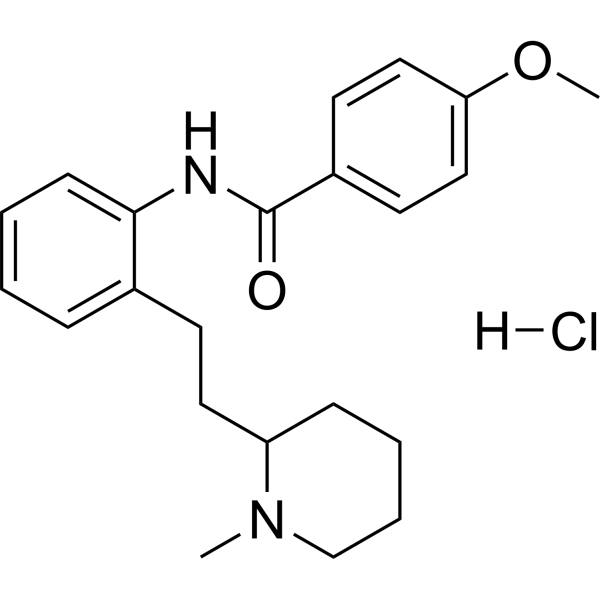
-
- HY-118172
-
-
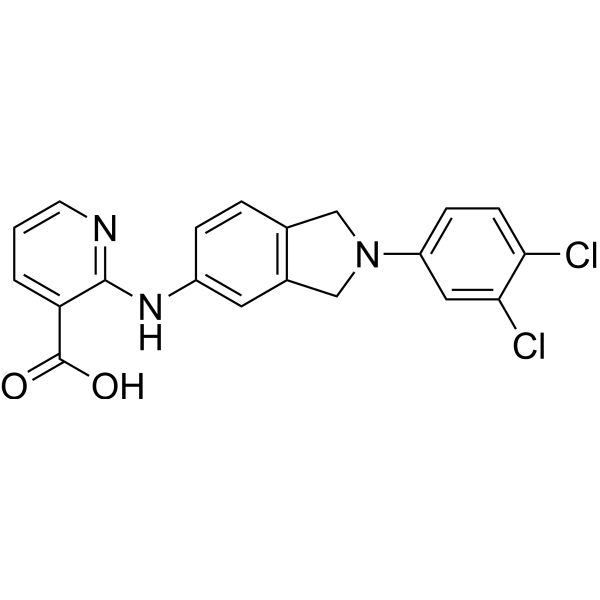
-
- HY-113858
-
-

-
- HY-W181626
-
|
DU 21445
|
5-HT Receptor
|
Cardiovascular Disease
|
|
Tiprenolol is a β-adrenoceptor blocker. Tiprenolol can abolish the ventricular arrhythmias produced by adrenaline in dogs respired with halothane .
|
-

-
- HY-116072
-
|
|
Calcium Channel
|
Cardiovascular Disease
|
|
Antiarrhythmic agent-2 is a nonspecific Ca 2+ inward current blocker that inhibits ionic currents in sensory neuron membranes. Antiarrhythmic agent-2 can be used in the study of cardiovascular diseases, such as arrhythmias .
|
-
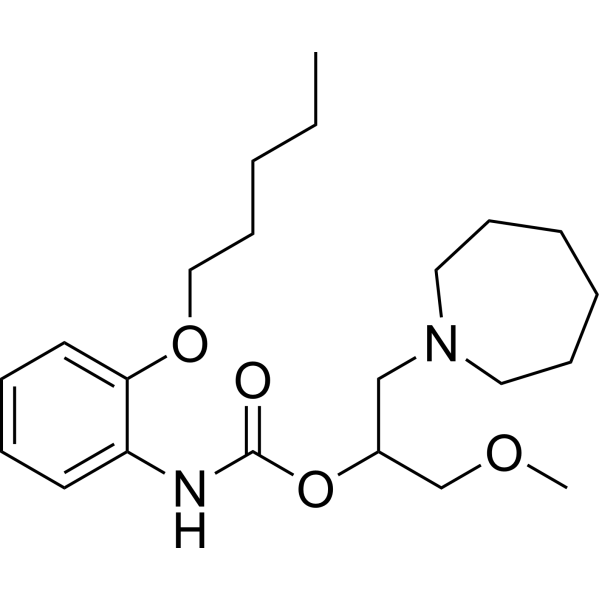
-
- HY-119802
-
-
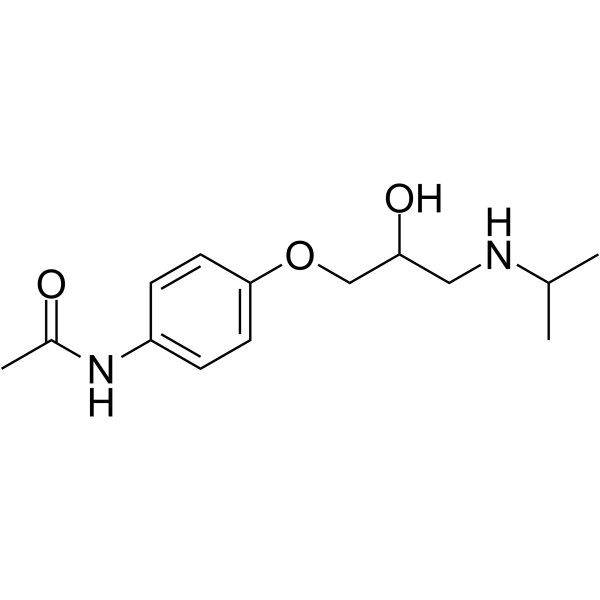
-
- HY-101361
-
|
Methyllidocaine iodide
|
Others
|
Neurological Disease
|
|
Lidocaine methiodide (Methyllidocaine iodide) is a potent antiarrythmic agent. Lidocaine methiodide can be used for the research of ventricular arrhythmias produced by coronary occlusion .
|
-

-
- HY-119802R
-
|
|
Adrenergic Receptor
|
Cardiovascular Disease
|
|
Practolol (Standard) is the analytical standard of Practolol. This product is intended for research and analytical applications. Practolol is a potent and selective β1-adrenergic receptor antagonist. Practolol can be used for the research of cardiac arrhythmias .
|
-

-
- HY-N3167
-
|
|
Others
|
Cardiovascular Disease
|
|
Nyasicoside is a norlignan glucosides that can be isolated from Curculigo capitulate. Nyasicoside has potent activity against ouabain-induced arrhythmia in the heart preparations of guinea pig .
|
-
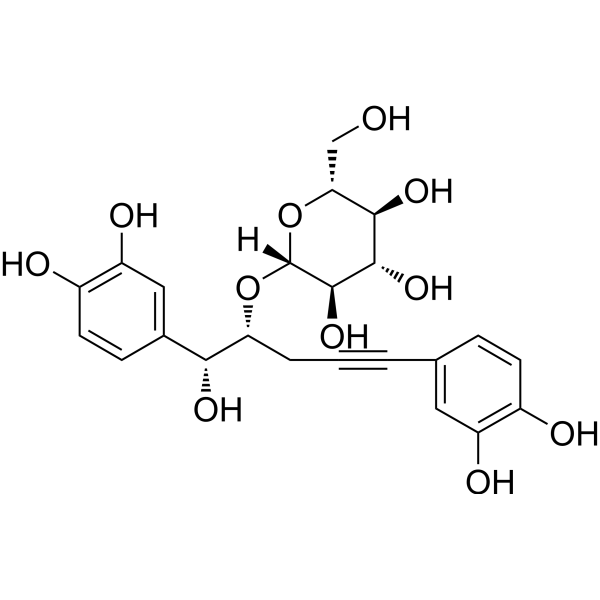
-
- HY-103059
-
|
|
Calcium Channel
|
Cardiovascular Disease
|
|
SOICR-IN-1 (compound 32) is a store-overload induced calcium release (SOICR) inhibitor with an IC50 value of 14.6 μM. SOICR-IN-1 can be used for the research of cardiac arrhythmias .
|
-
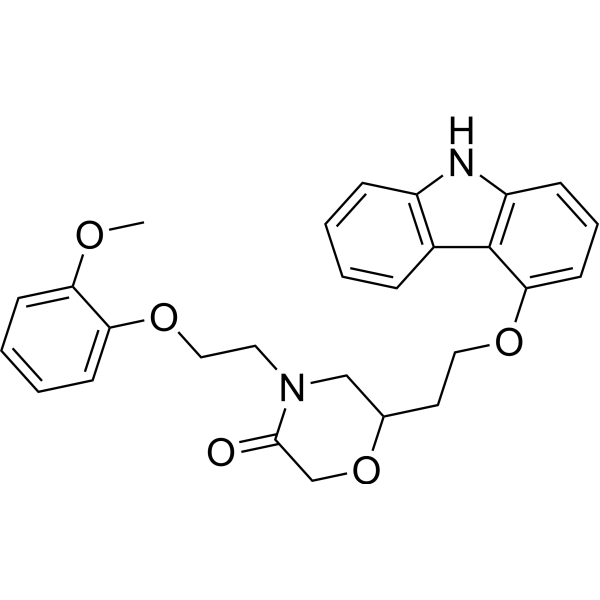
-
- HY-107754
-
|
|
Potassium Channel
|
Cardiovascular Disease
|
|
Cesium chloride is a blocker of potassium channel. Cesium chloride prevents the decrease of Na + transport produced by Alloxan . Cesium chloride has induced cardiac arrhythmias, including torsade de pointes in animal models .
|
-
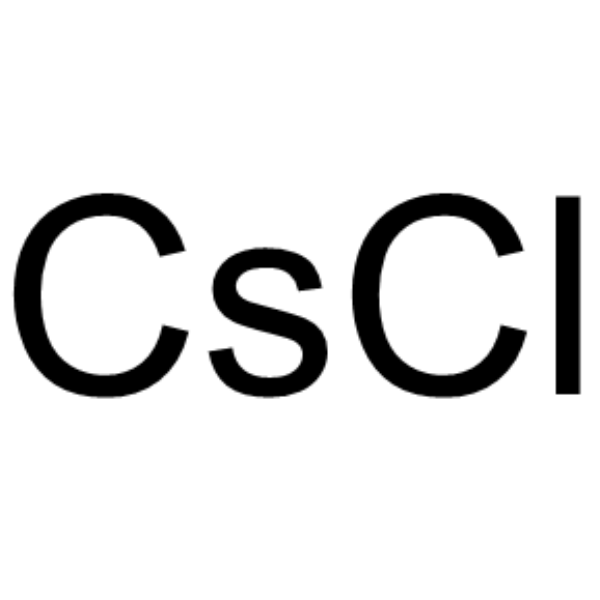
-
- HY-111013
-
|
|
Others
|
Cardiovascular Disease
|
|
VK-II-86 is a Carvedilol (HY-B0006) analogue lacking antagonist activity at β-adrenoceptors, in hypokalaemia. VK-II-86 prevents hypokalaemia-induced ventricular arrhythmia through multi-channel effects. VK-II-86 prevents all hypokalaemia-induced changes in ion channel activity and oxidative stress .
|
-
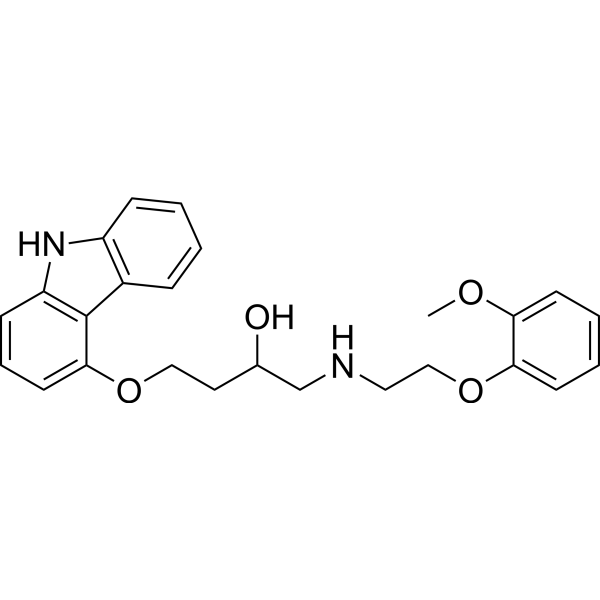
-
- HY-B0632
-
|
|
Calcium Channel
|
Cardiovascular Disease
Cancer
|
|
Diltiazem is an orally active L-type Ca 2+ channel blocker. Diltiazem shows antihypertensive and antiarrhythmic effects. Diltiazem can be used for the research of cardiac arrhythmia, hypertension, and angina pectoris .
|
-
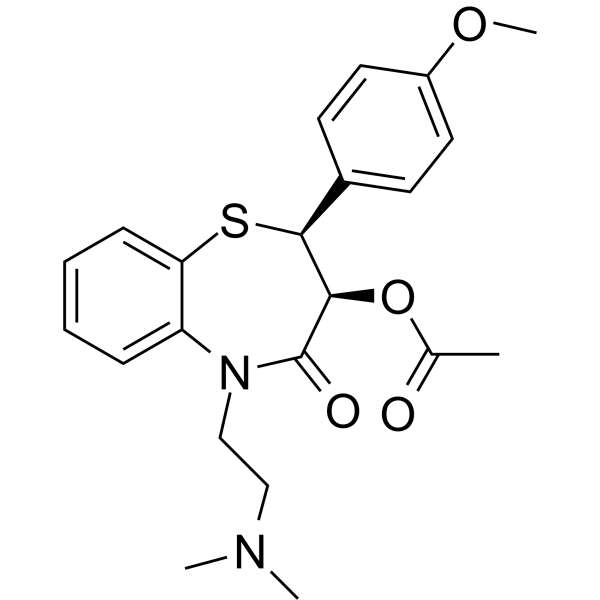
-
- HY-106207
-
|
SSR149744C
|
Others
|
Cardiovascular Disease
|
|
Celivarone (SSR149744C) is a orally active noniodinated benzofuran derivative with antiarrhythmic properties. Celivarone has the potential for atrial fibrillation and in ventricular arrhythmias research .
|
-

-
- HY-17497
-
-
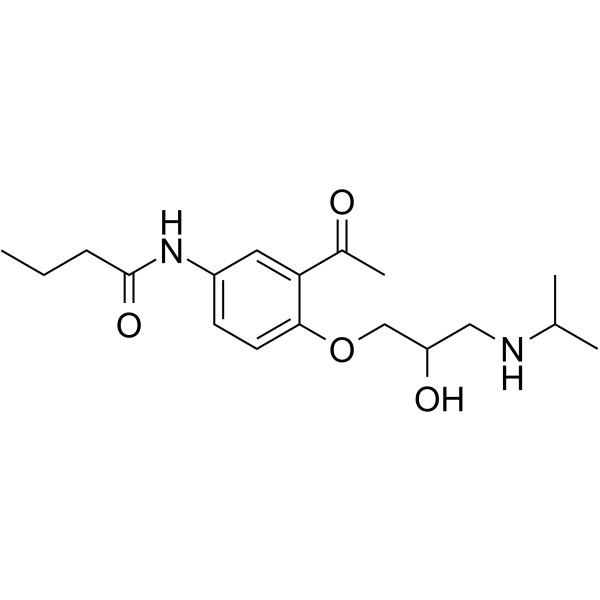
-
- HY-B0632A
-
|
MK 793
|
Calcium Channel
|
Cardiovascular Disease
|
|
Diltiazem malate is a potent and orally active L-type calcium channel inhibitor. Diltiazem malate shows antihypertensive and antiarrhythmic effects. Diltiazem malate can be used for the research of cardiac arrhythmia, hypertension, and angina pectoris .
|
-

-
- HY-A0084A
-
|
Procaine amide; SP 100
|
DNA Methyltransferase
|
Cardiovascular Disease
Cancer
|
|
Procainamide is a specific and potent inhibitor of DNA methyltransferase 1 (DNMT1). Procainamide is a Class 1A antiarrhythmic agent. Procainamide has the potential for the research of cancer and arrhythmias .
|
-
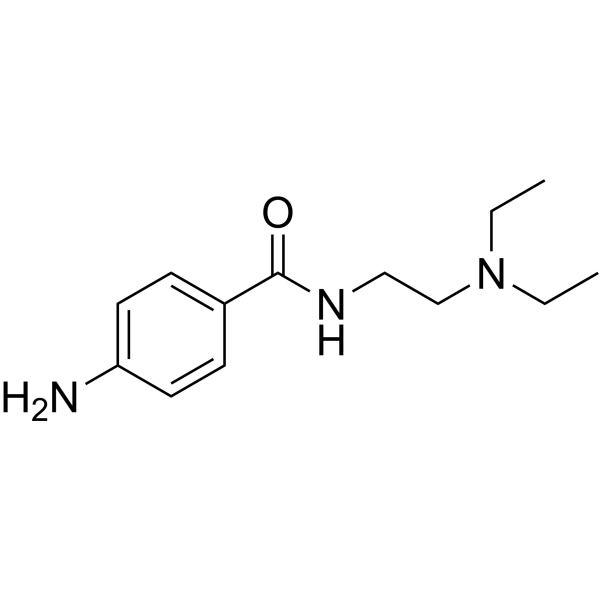
-
- HY-15208
-
|
HMR 1098
|
Potassium Channel
|
Neurological Disease
|
|
Clamikalant sodium (HMR 1098) is an ATP-sensitive potassium (KATP) channel blocker. Clamikalant sodium can be used for the research of arrhythmia .
|
-
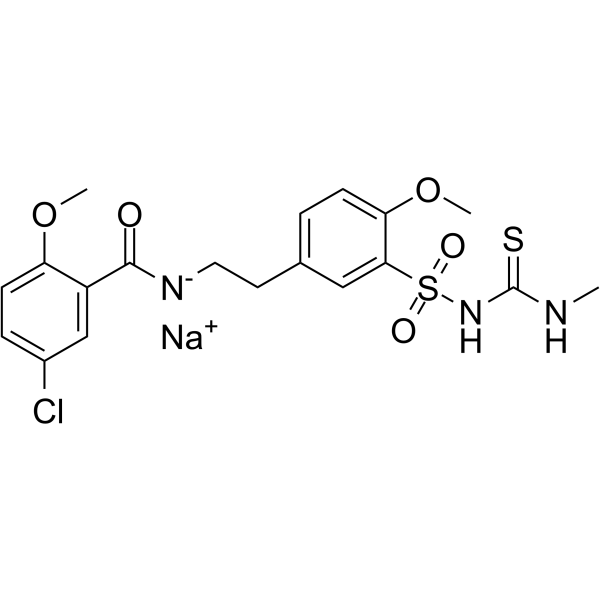
-
- HY-B0632R
-
|
|
Calcium Channel
|
Cardiovascular Disease
Cancer
|
|
Diltiazem (Standard) is the analytical standard of Diltiazem. This product is intended for research and analytical applications. Diltiazem is an orally active L-type Ca 2+ channel blocker. Diltiazem shows antihypertensive and antiarrhythmic effects. Diltiazem can be used for the research of cardiac arrhythmia, hypertension, and angina pectoris .
|
-

-
- HY-A0154
-
|
Deacetyllanatoside C; Desacetyllanatoside C
|
Na+/K+ ATPase
Drug Metabolite
|
Cardiovascular Disease
|
|
Deslanoside (Desacetyllanatoside C) is a rapidly acting cardiac glycoside used to treat congestive heart failure and supraventricular arrhythmias due to reentry mechanisms, and to control ventricular rate in the treatment of chronic atrial fibrillation. Deslanoside inhibits the Na-K-ATPase membrane pump, resulting in an increase in intracellular sodium and calcium concentrations .
|
-
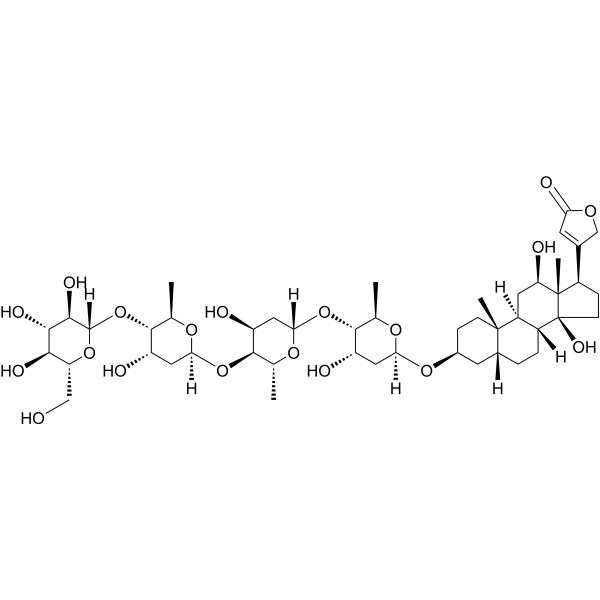
-
- HY-12533
-
|
Dicorantil; SC-7031
|
Sodium Channel
Potassium Channel
|
Cardiovascular Disease
|
|
Disopyramide (Dicorantil) is a class IA antiarrhythmic agent with efficacy in ventricular and atrial arrhythmias. Disopyramide blocks the fast inward sodium current of cardiac muscle and prolongs the duration of cardiac action potentials. Disopyramide inhibits HERG encoded potassium channels. Disopyramide also exhibits complex protein binding, and has a potent negative inotropic action .
|
-
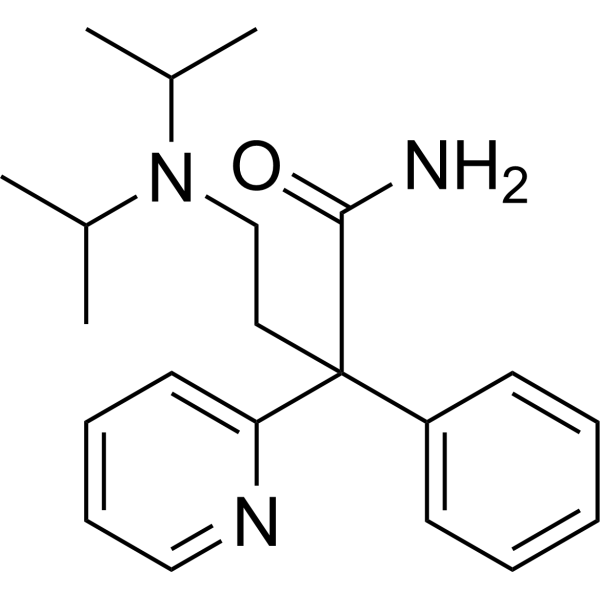
-
- HY-12533A
-
|
Dicorantil phosphate; SC-7031 phosphate
|
Potassium Channel
Sodium Channel
|
Cardiovascular Disease
|
|
Disopyramide phosphate is a class IA antiarrhythmic agent with efficacy in ventricular and atrial arrhythmias. Disopyramide phosphate blocks the fast inward sodium current of cardiac muscle and prolongs the duration of cardiac action potentials. Disopyramide phosphate inhibits HERG encoded potassium channels. Disopyramide phosphate also exhibits complex protein binding, and has a potent negative inotropic action .
|
-

-
- HY-A0154R
-
|
|
|
Cardiovascular Disease
|
|
Deslanoside (Standard) is the analytical standard of Deslanoside. This product is intended for research and analytical applications. Deslanoside (Desacetyllanatoside C) is a rapidly acting cardiac glycoside used to treat congestive heart failure and supraventricular arrhythmias due to reentry mechanisms, and to control ventricular rate in the treatment of chronic atrial fibrillation. Deslanoside inhibits the Na-K-ATPase membrane pump, resulting in an increase in intracellular sodium and calcium concentrations .
|
-

-
- HY-12533R
-
|
|
Sodium Channel
Potassium Channel
|
Cardiovascular Disease
|
|
Disopyramide (Standard) is the analytical standard of Disopyramide. This product is intended for research and analytical applications. Disopyramide (Dicorantil) is a class IA antiarrhythmic agent with efficacy in ventricular and atrial arrhythmias. Disopyramide blocks the fast inward sodium current of cardiac muscle and prolongs the duration of cardiac action potentials. Disopyramide inhibits HERG encoded potassium channels. Disopyramide also exhibits complex protein binding, and has a potent negative inotropic action .
|
-

-
- HY-14188
-
|
|
Potassium Channel
Autophagy
|
Cardiovascular Disease
Cancer
|
|
Amiodarone hydrochloride, a benzofuran-based Class III antiarrhythmic agent, inhibits WT outwardIhERG tails with an IC50 of ∼45 nM . Amiodarone hydrochloride induces cell proliferation and myofibroblast differentiation via ERK1/2 and p38 MAPK signaling in fibroblasts . Amiodarone hydrochloride can be used in the research of both supraventricular and ventricular arrhythmias .
|
-
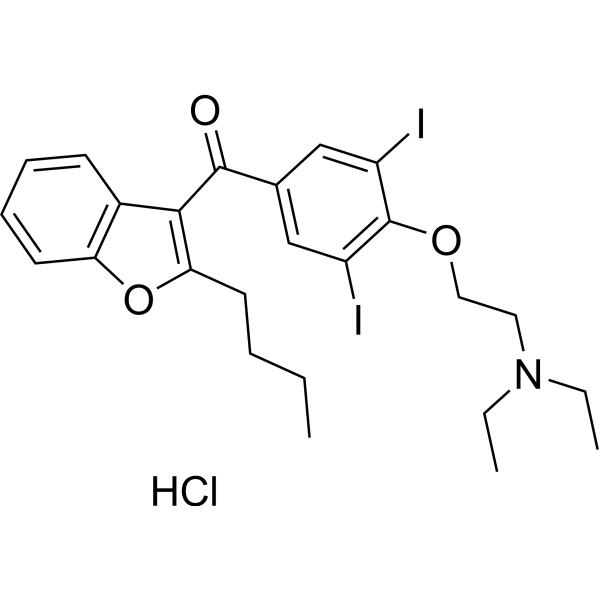
-
- HY-114846
-
|
|
Prostaglandin Receptor
|
Cardiovascular Disease
|
|
Ro 22-9194 inhibits aggregation and thromboxane Az (TXA2) synthetase activity in rabbit and human platelets. Ro 22-9194 has a potent inhibitory action against various types of model arrhythmias. Ro 22-9194 has non-cholinergic cardiac depressant properties with its vasodilating action .
|
-
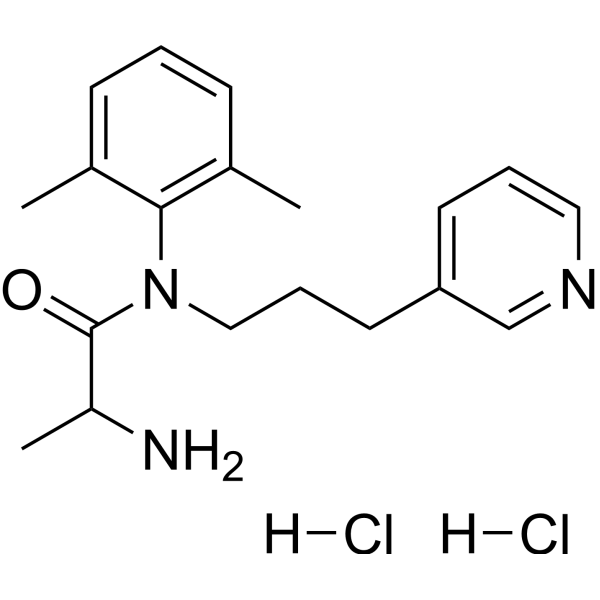
-
- HY-P5153
-
|
μ-TRTX-Tp1a
|
Sodium Channel
|
Neurological Disease
|
|
ProTx-III is a selective and potent inhibitor of voltage-gated sodium channel Nav1.7, with an IC50 of 2.1 nM. ProTx-III is a spider venom peptide isolated from the venom of the Peruvian green velvet tarantella. ProTx-III has a typical inhibitor cystine knot motif (ICK). ProTx-III is able to reverse the pain response. ProTx-III can be used to study diseases such as chronic pain, epilepsy, and arrhythmia .
|
-
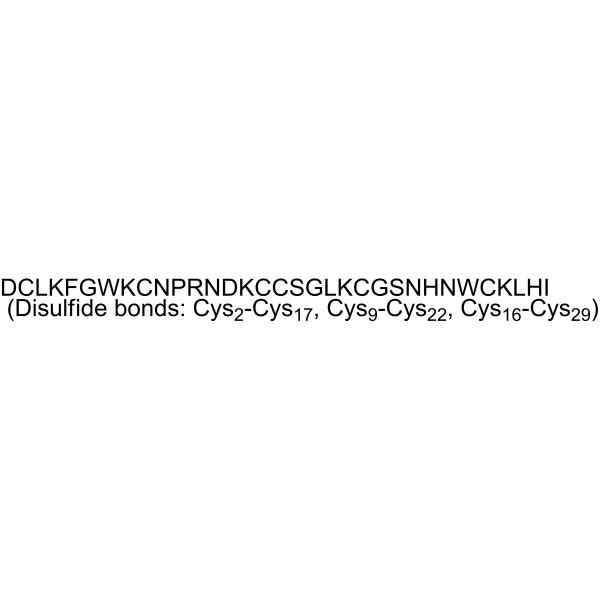
-
- HY-16738A
-
|
GS 6615 hydrochloride
|
Sodium Channel
Potassium Channel
|
Cardiovascular Disease
|
|
Eleclazine (GS 6615) hydrochloride is a selective cardiac late sodium current inhibitor and a weak inhibitor of potassium current with IC50 value of <1 μM and approximately 14.2 μM, respectively. Eleclazine hydrochloride shows concurrent protection against autonomically induced atrial premature beats, repolarization alternans and heterogeneity, and atrial fibrillation in porcine model. Eleclazine hydrochloride can be used to research cardiac arrhythmias .
|
-

-
- HY-106225
-
|
ZP123
|
Gap Junction Protein
|
Cardiovascular Disease
|
|
Rotigaptide (ZP123) is a novel and specific modulator of connexin 43 (Cx43). Rotigaptide prevents the uncoupling of Cx43-mediated gap junction communication and normalizes cell-to-cell communication during acute metabolic stress. Rotigaptide is a potent antiarrhythmic peptide (AAP) with improved stability and has the potential for the investigation of cardiac arrhythmias-specifically atrial fibrillation .
|
-
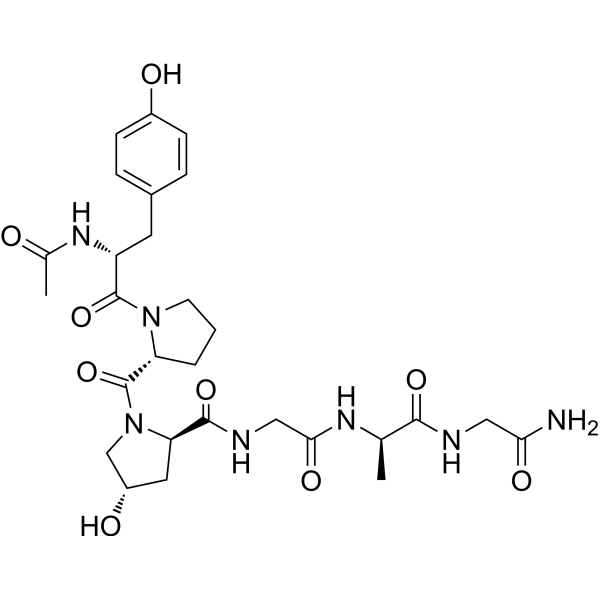
-
- HY-B1238
-
|
(±)-Pronethalo
|
Adrenergic Receptor
|
Cardiovascular Disease
Neurological Disease
|
|
Pronethalol ((±)-Pronethalo) is a non-selective β-adrenergic antagonist. Pronethalol is a potent inhibitor of Sox2 expression. Pronethalol protects against and to reverse Digitalis-induced ventricular arrhythmias and limits the cerebral arteriovenous malformation (AVMs) .
|
-
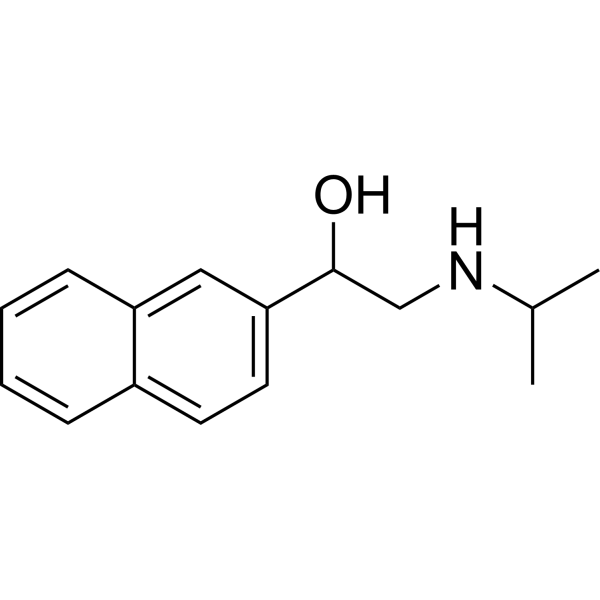
-
- HY-B1238A
-
|
(±)-Pronethalo hydrochloride
|
Adrenergic Receptor
|
Cardiovascular Disease
Neurological Disease
|
|
Pronethalol ((±)-Pronethalo) is a non-selective β-adrenergic antagonist. Pronethalol is a potent inhibitor of Sox2 expression. Pronethalol protects against and to reverse Digitalis-induced ventricular arrhythmias, and limits the cerebral arteriovenous malformation (AVMs) .
|
-
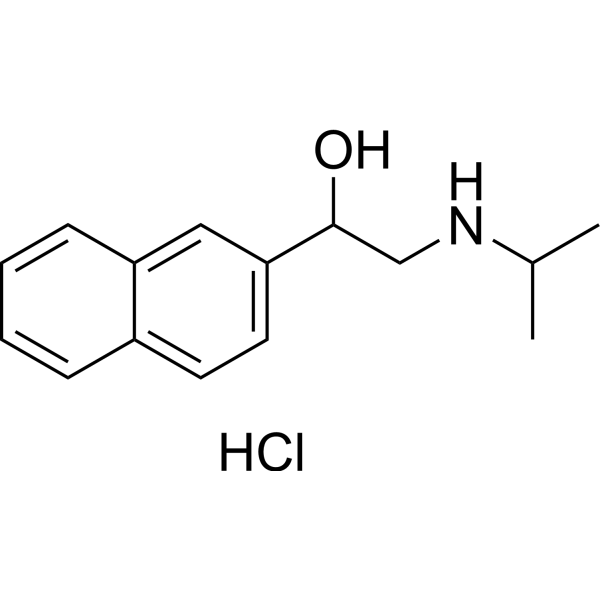
-
- HY-B0573A
-
|
|
Adrenergic Receptor
|
Cardiovascular Disease
Inflammation/Immunology
|
|
(S)-(-)-Propranolol hydrochloride is a β-adrenergic receptor antagonist with log Kd values of -8.16, -9.08, and -6.93 for β1, β2, and β3, respectively. (S)-(-)-Propranolol hydrochloride the active enantiomer of propranolol and can be s used for study of hypertension, pheochromocytoma, myocardial infarction, cardiac arrhythmias, angina pectoris, and hypertrophic cardiomyopathy .
|
-
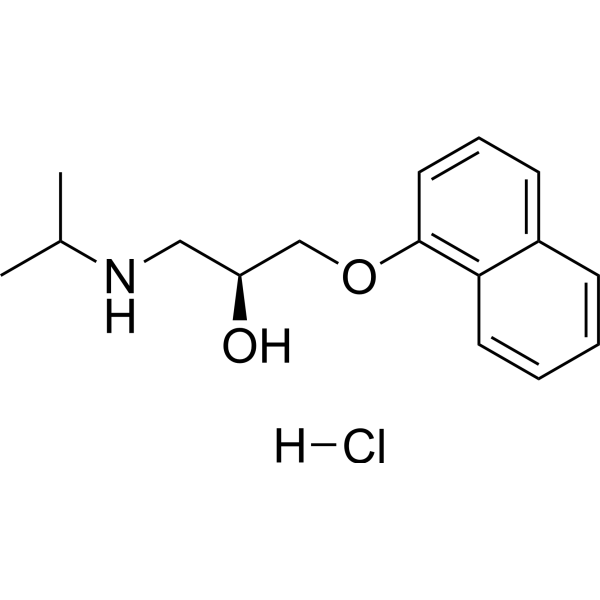
-
- HY-34350
-
|
2-Hydroxybenzylamine; o-Hydroxybenzylamine; 2-HOBA
|
Reactive Oxygen Species
|
Cardiovascular Disease
Inflammation/Immunology
|
|
2-(Aminomethyl)phenol (2-Hydroxybenzylamine), a selective dicarbonyl scavenger, is an antioxidant and scavanger of free radicals and isolevuglandins (IsoLGs). 2-(Aminomethyl)phenol can be used in the research of inflammation and cardiovascular disease, such as atherosclerosis, early recurrence of atrial fibrillation (AF) and arrhythmias .
|
-

-
- HY-100952
-
|
|
Adrenergic Receptor
|
Cardiovascular Disease
|
|
Nifenalol hydrochloride is a β-adrenergic receptor antagonist. Nifenalol hydrochloride induces the Early Afterdepolarization (EAD) effect. EAD is a phenomenon in cardiac electrophysiology that usually occurs during an action potential in ventricular muscle cells and can lead to arrhythmia. The EAD effect of Nifenalol hydrochloride can be blocked by Tetrodotoxin. Nifenalol hydrochloride is used in the study of conditions such as irregular heartbeat or high blood pressure .
|
-
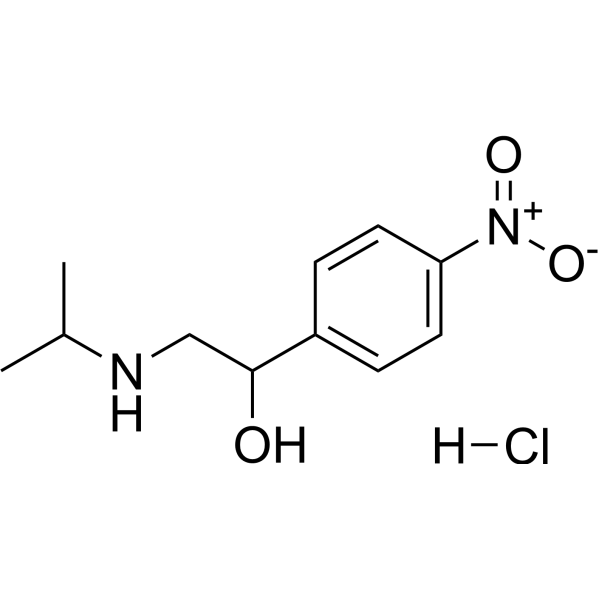
-
- HY-149779
-
|
|
Calcium Channel
|
Cardiovascular Disease
|
|
RyR2 stabilizer-1 (compound 12a) is a potent RyR2 stabilizer and SERCA2a activator with EC50s of 2.7 μM for RyR2 and 383 nM for SERCA2. RyR2 stabilizer-1 inhibits Ca 2+ leakage from the SR RyR2 while promoting SERCA2 to pump Ca 2+ back to SR, which make RyR2 stabilizer-1 possible to prevent cardiac arrhythmias .
|
-

-
- HY-17497S
-
-

-
- HY-B0432AS2
-
|
|
Sodium Channel
|
Cardiovascular Disease
|
|
Propafenone-d5 (hydrochloride) is the deuterium labeled Propafenone hydrochloride. Propafenone (SA-79) hydrochloride is a class of anti-arrhythmic medication, which treats illnesses associated with rapid heart beats such as atrial and ventricular arrhythmias[1].
|
-
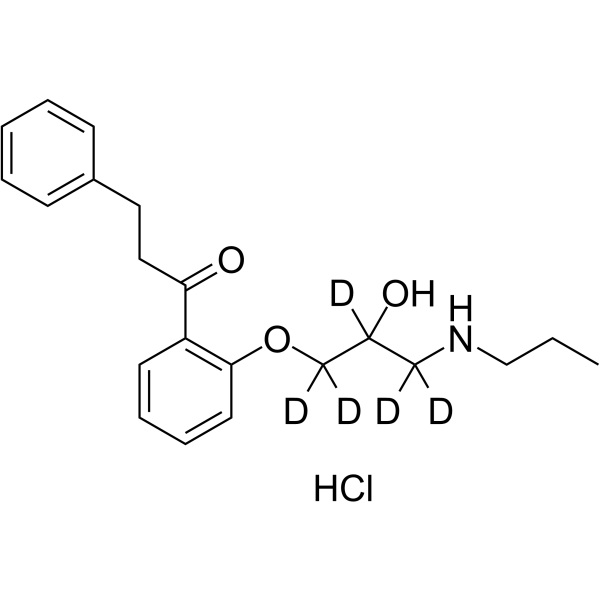
-
- HY-B0432AS4
-
|
|
Sodium Channel
|
Cardiovascular Disease
|
|
Propafenone-(phenyl-dd5) (hydrochloride) is the deuterium labeled Propafenone hydrochloride[1]. Propafenone hydrochloride is a class of anti-arrhythmic medication, which treats illnesses associated with rapid heart beats such as atrial and ventricular arrhythmias[2].
|
-
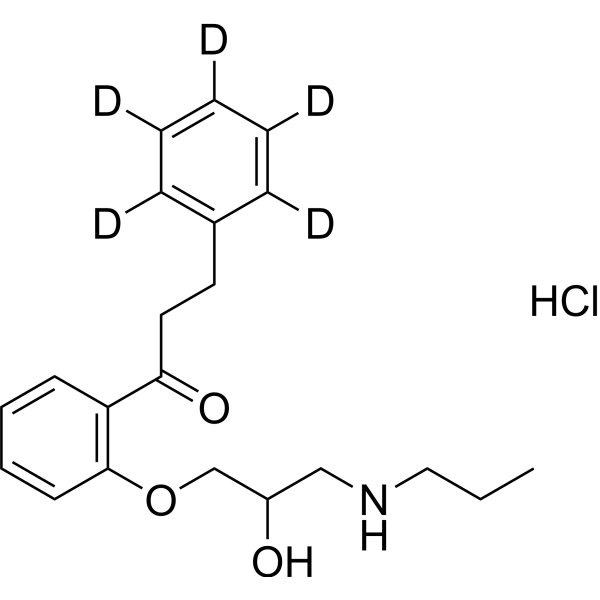
-
- HY-B0432AS3
-
|
|
Sodium Channel
|
Cardiovascular Disease
|
|
Propafenone-d5 Ethyl (hydrochloride) is the deuterium labeled Propafenone hydrochloride. Propafenone (SA-79)hydrochloride is a class of anti-arrhythmic medication, which treats illnesses associated with rapid heart beats such as atrial and ventricular arrhythmias[1].
|
-
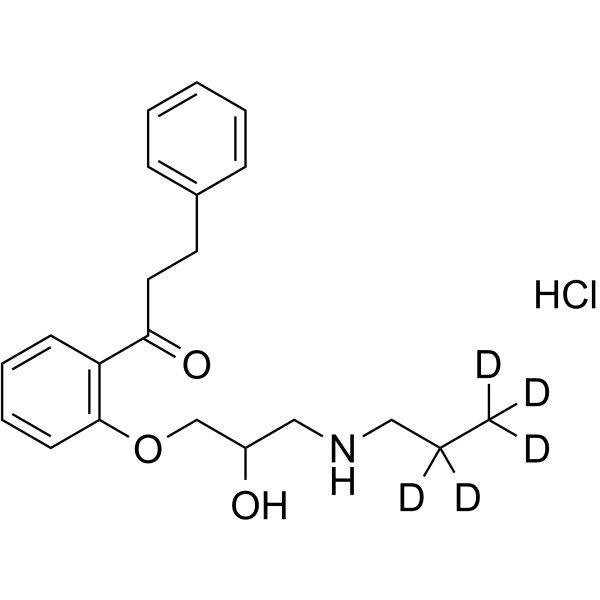
-
- HY-119802S
-
-
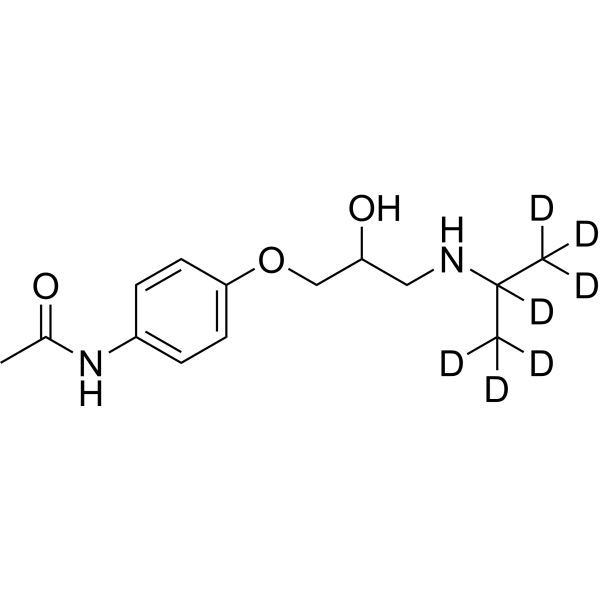
-
- HY-A0084S
-
|
Procaine amide-d4 hydrochloride; SP 100-d4 hydrochloride
|
Isotope-Labeled Compounds
|
Cancer
|
|
Procainamide-d4 hydrochloride is deuterated labeled Procainamide. Procainamide hydrochloride is an antiarrhythmic agent used in the study of cardiac arrhythmias.
|
-
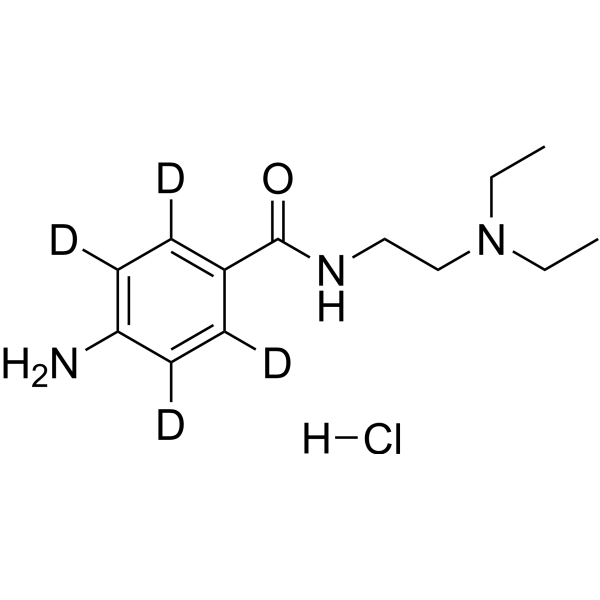
-
- HY-A0084S1
-
|
Procaine amide-13C2 hydrochloride; SP 100-13C2 hydrochloride
|
Isotope-Labeled Compounds
|
Cancer
|
|
Procainamide- 13C2 hydrochloride is 13C labeled Procainamide. Procainamide hydrochloride is an antiarrhythmic agent used in the study of cardiac arrhythmias.
|
-
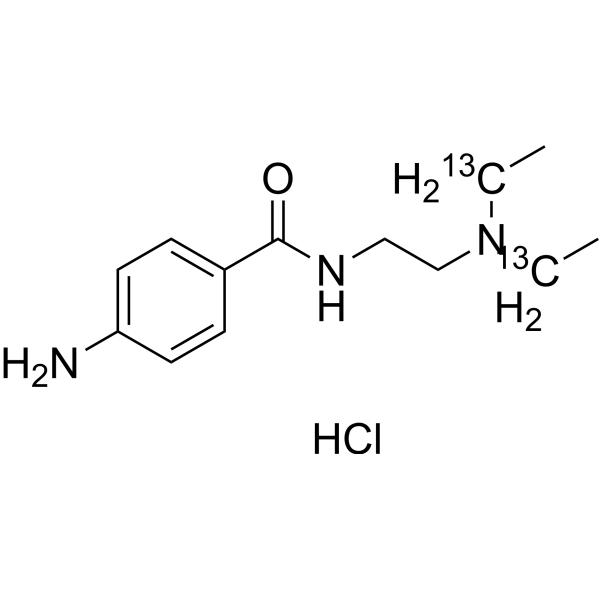
-
- HY-106180
-
|
GR 56072; RG 14202; Selodenoson
|
Adenosine Receptor
|
Neurological Disease
|
|
DTI 0009 is a selective adenosine A1 receptor agonist used to reduce heart rate in patients with atrial fibrillation and to treat arrhythmias .
|
-

-
- HY-B0432A
-
|
SA-79 hydrochloride
|
Sodium Channel
|
Cardiovascular Disease
|
|
Propafenone (hydrochloride) (SA-79 (hydrochloride)) is a class of anti-arrhythmic medication, which treats illnesses associated with rapid heart beats such as atrial and ventricular arrhythmias.
|
-
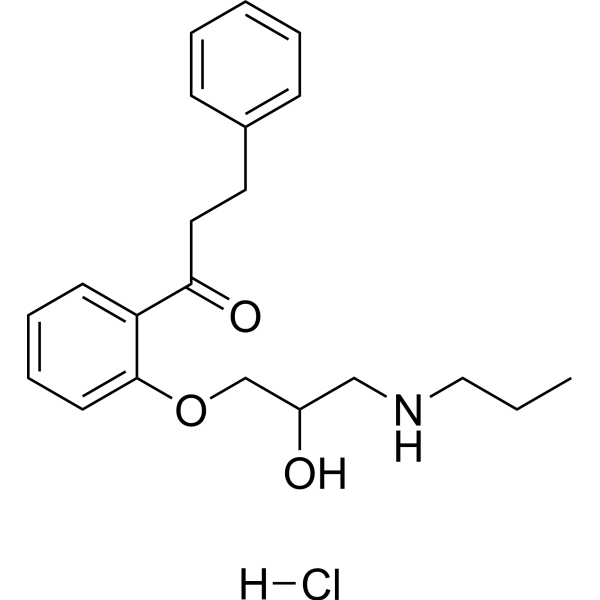
-
- HY-B0185AS
-
|
|
Sodium Channel
MEK
ERK
NF-κB
Apoptosis
|
Cardiovascular Disease
Cancer
|
|
Lidocaine-d10 (hydrochloride) is the deuterium labeled Lidocaine hydrochloride. Lidocaine hydrochloride (Lignocaine hydrochloride) inhibits sodium channels involving complex voltage and using dependence[1]. Lidocaine hydrochloride decreases growth, migration and invasion of gastric carcinoma cells via up-regulating miR-145 expression and further inactivation of MEK/ERK and NF-κB signaling pathways. Lidocaine hydrochloride, an amide derivative, has the potential for the research of the ventricular arrhythmia[2].
|
-
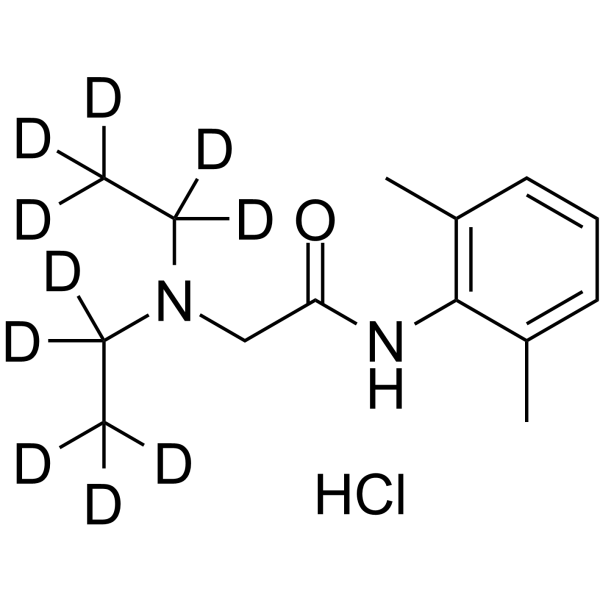
-
- HY-14188S
-
|
|
Potassium Channel
Autophagy
|
Cardiovascular Disease
Cancer
|
|
Amiodarone-d4 (hydrochloride) is the deuterium labeled Amiodarone hydrochloride. Amiodarone hydrochloride, a benzofuran-based Class III antiarrhythmic agent, inhibits WT outwardIhERG tails with an IC50 of ∼45 nM[1]. Amiodarone hydrochloride induces cell proliferation and myofibroblast differentiation via ERK1/2 and p38 MAPK signaling in fibroblasts[2]. Amiodarone hydrochloride can be used in the research of both supraventricular and ventricular arrhythmias[1].
|
-
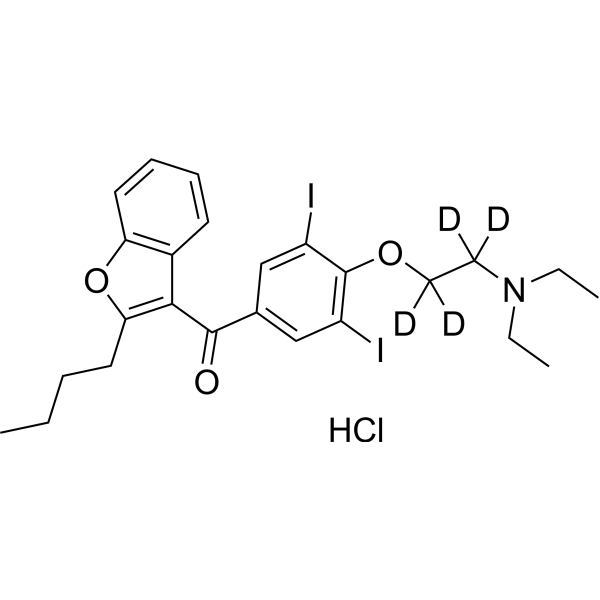
-
- HY-B0185S1
-
|
|
Sodium Channel
MEK
ERK
NF-κB
Apoptosis
|
Cardiovascular Disease
Cancer
|
|
Lidocaine-d10 is the deuterium labeled Lidocaine. Lidocaine (Lignocaine) inhibits sodium channels involving complex voltage and using dependence[1]. Lidocaine decreases growth, migration and invasion of gastric carcinoma cells via up-regulating miR-145 expression and further inactivation of MEK/ERK and NF-κB signaling pathways. Lidocaine is an amide derivative and has potential for the research of ventricular arrhythmia[2].
|
-
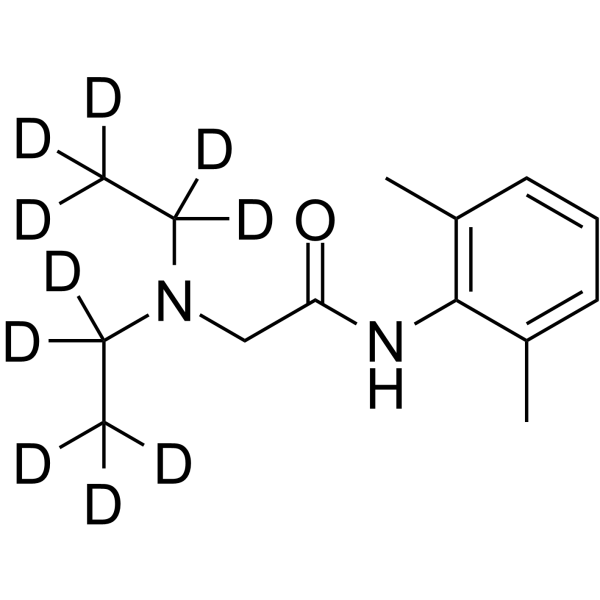
-
- HY-17417
-
|
|
Opioid Receptor
|
Neurological Disease
|
|
Naloxone hydrochloride is an antagonist of Opioid receptor. Naloxone hydrochloride alleviates opioid-overdose-induced respiratory depression. Naloxone hydrochloride may cause pulmonary edema and cardiac arrhythmias .
|
-
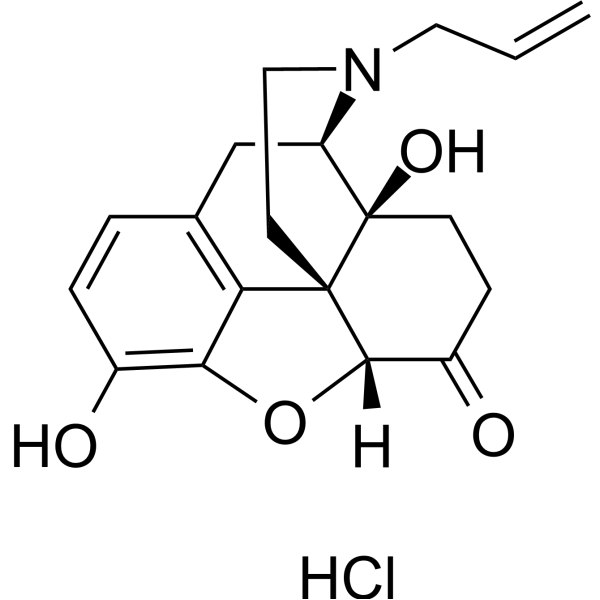
- HY-119850
-
|
ARM036
|
Others
|
Cardiovascular Disease
|
|
Aladorian (ARM036) is a benzothiazepine derivative, with anti-arrhythmia effect. Aladorian is used for the research of heart failure and catecholaminergic polymorphic ventricular tachycardia .
|
-
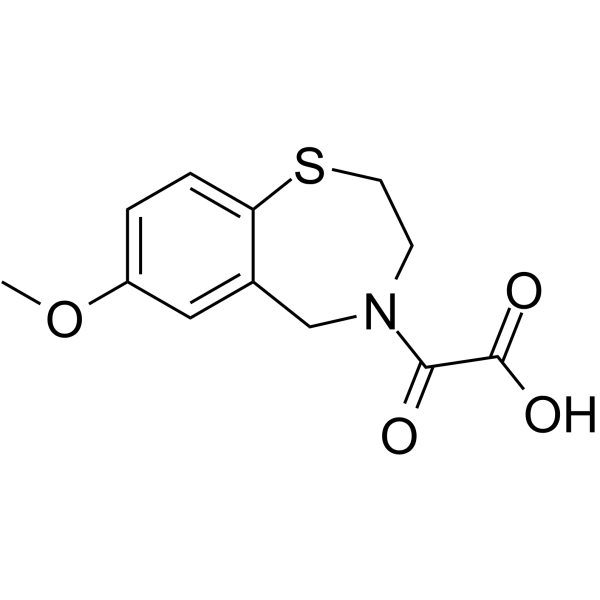
- HY-17417A
-
|
|
Opioid Receptor
|
Neurological Disease
|
|
Naloxone is an antagonist of Opioid receptor. Naloxone alleviates opioid-overdose-induced respiratory depression. Naloxone may cause pulmonary edema and cardiac arrhythmias .
|
-
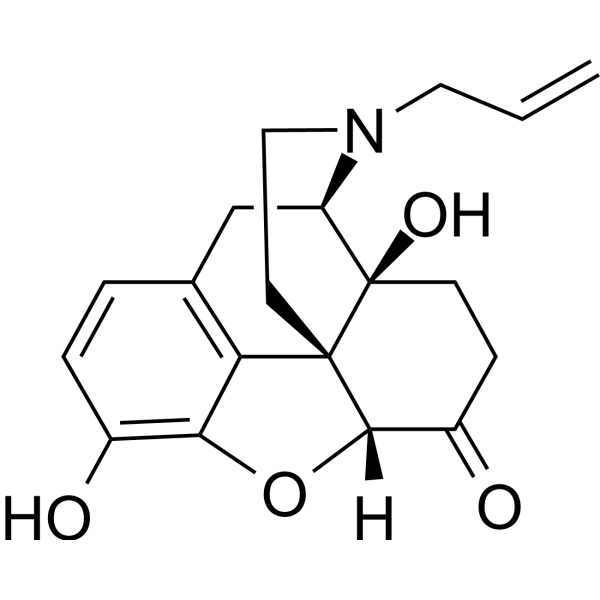
- HY-B0185S
-
|
|
Sodium Channel
MEK
ERK
NF-κB
Apoptosis
|
Cardiovascular Disease
Cancer
|
|
N-Oxide Lidocaine-d10 is the deuterium labeled Lidocaine. Lidocaine (Lignocaine) inhibits sodium channels involving complex voltage and using dependence[1]. Lidocaine decreases growth, migration and invasion of gastric carcinoma cells via up-regulating miR-145 expression and further inactivation of MEK/ERK and NF-κB signaling pathways. Lidocaine is an amide derivative and has potential for the research of ventricular arrhythmia[2].
|
-
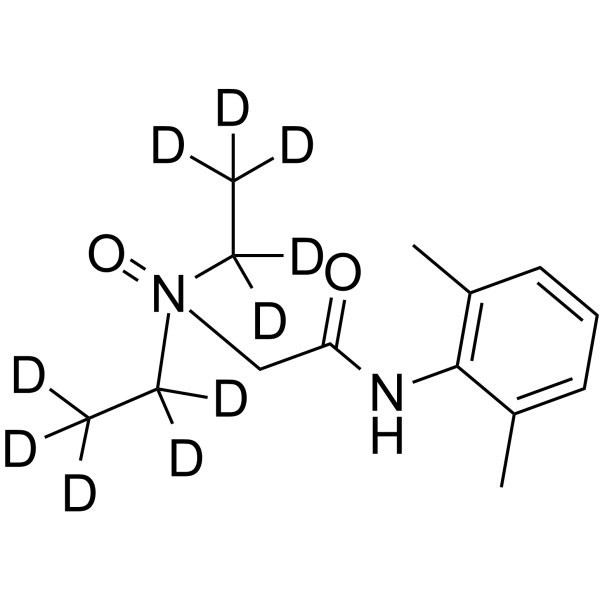
- HY-A0084
-
|
Procaine amide hydrochloride; SP 100 hydrochloride
|
Autophagy
|
Cancer
|
|
Procainamide hydrochloride is an anti-arrhythmic agent and is used to treat cardiac arrhythmia; induces rapid block of the batrachotoxin(BTX)-activated sodium channels of the heart muscle and acts as antagonist to long gating closures.
|
-
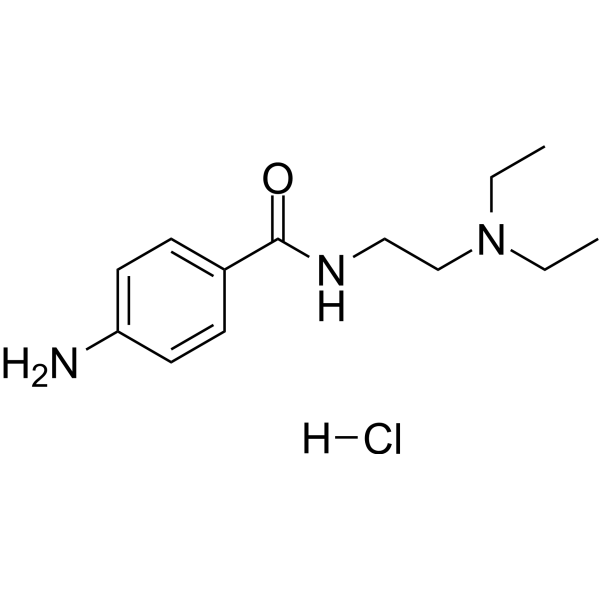
- HY-108564
-
|
|
Prostaglandin Receptor
|
Cardiovascular Disease
|
|
L 655240 is thromboxane antagonist. L 655240 attenuates early ischemia- and reperfusion-induced arrhythmias in a canine model of coronary artery occlusion. L 655240 also involves in cancer and autoimmune disorders .
|
-

- HY-137986
-
|
|
Potassium Channel
|
Inflammation/Immunology
|
|
LUF7244 is a selective allosteric modulator of Kv11.1 channels. LUF7244 inhibits early afterdepolarizations. LUF7244 can be used for anti-arrhythmia research .
|
-
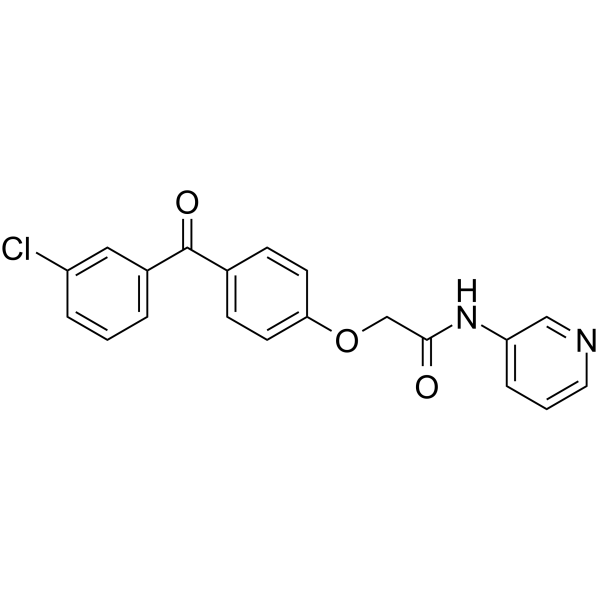
- HY-121306
-
|
Ricainide
|
Others
|
Neurological Disease
|
|
Indecainide (Ricainide) is an orally active antiarrhythmic agent. Indecainide can be used in the research of ventricular dysfunction .
|
-
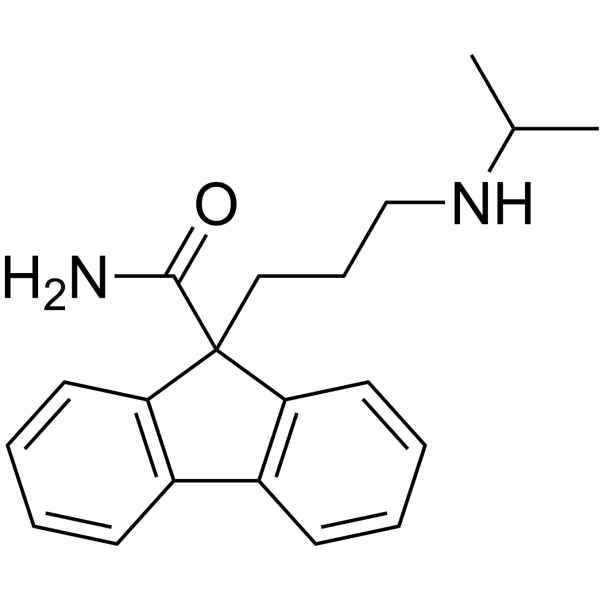
- HY-17497A
-
-

- HY-144802
-
-
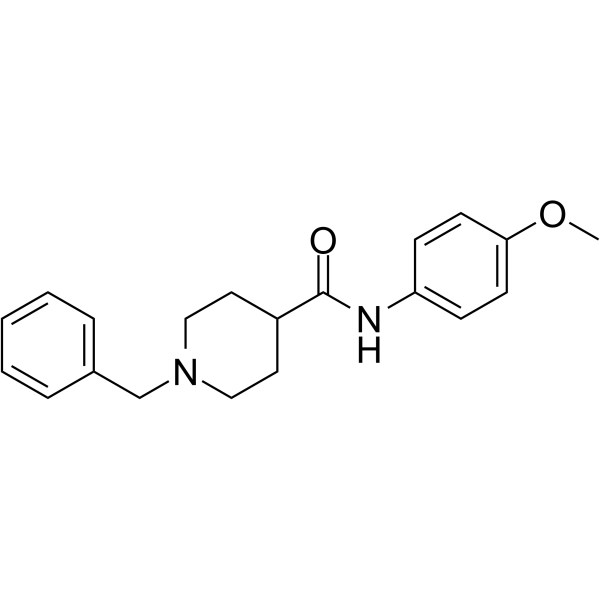
- HY-100712
-
|
|
Potassium Channel
|
Cardiovascular Disease
|
|
DPO-1 is a potent inhibitor of the voltage-gated potassium channel subtype Kv1.5 and a blocker of ultrarapid delayed rectifier potassium current. DPO-1 prevents atrial arrhythmia .
|
-
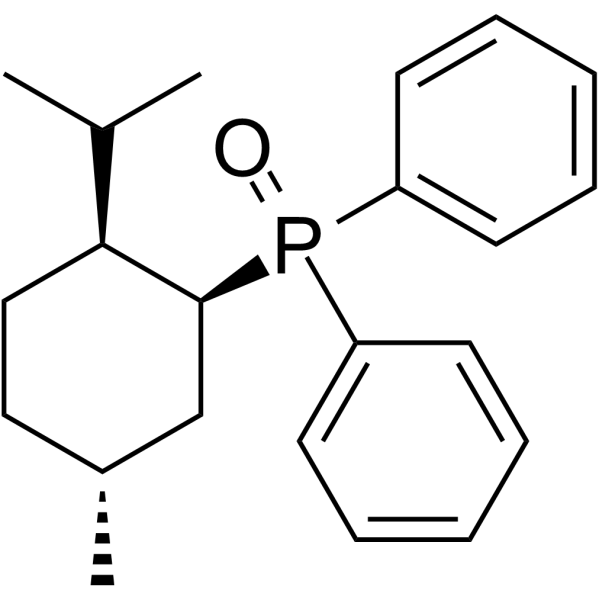
- HY-17429
-
|
R-818
|
Sodium Channel
|
Cardiovascular Disease
|
|
Flecainide acetate (R-818) is a class 1C antiarrhythmic agent especially used for the management of supraventricular arrhythmia; works by blocking the Nav1.5 sodium channel in the heart, causing prolongation of the cardiac action potential.
|
-
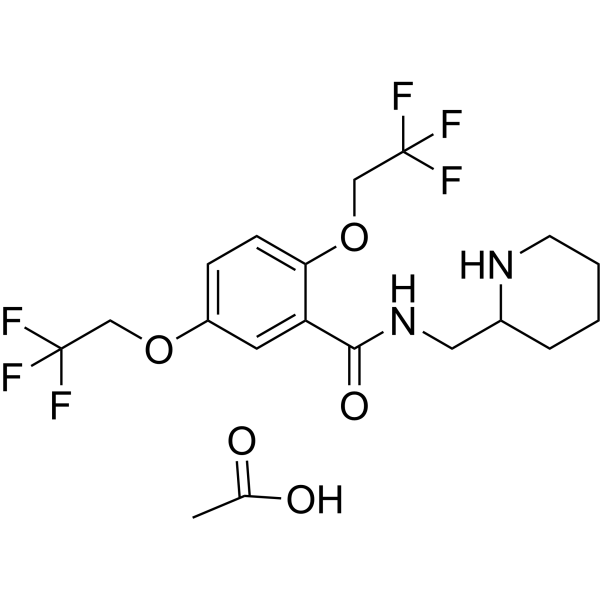
- HY-112075
-
|
|
Potassium Channel
Calcium Channel
|
Cardiovascular Disease
|
|
Lidoflazine is a high affinity blocker of the HERG (human ether-a-go-go-related gene) K + channel. Lidoflazine is an antianginal calcium channel blocker that carries a significant risk of QT interval prolongation and ventricular arrhythmia .
|
-
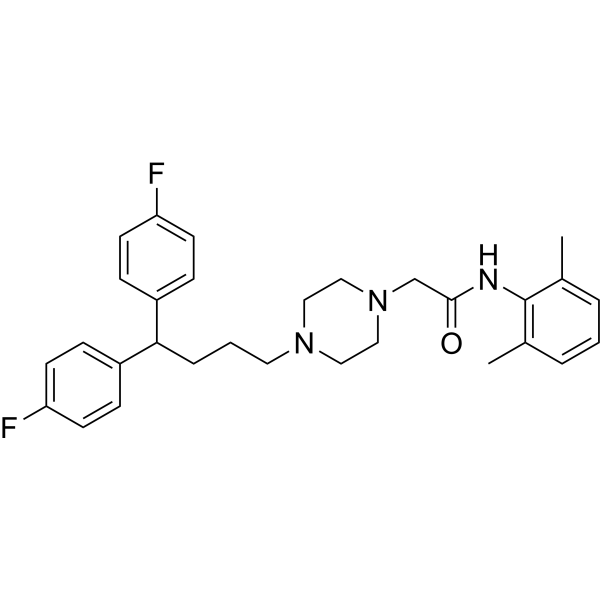
- HY-105454
-
|
Wy-42362
|
Others
|
Cardiovascular Disease
|
|
Recainam (Wy-42362) is an orally active anti-arrhythmic agent with Class I electrophysiological properties. Recainam suppresses complex ventricular arrhythmias. Racainam exhibits a good pharmacokinetic character in Sprague Dawley rats .
|
-

- HY-117699
-
-

- HY-A0295
-
-
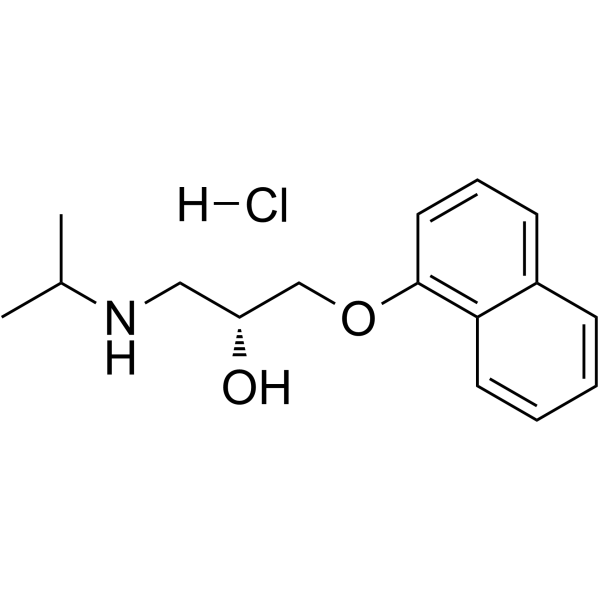
- HY-124883
-
-
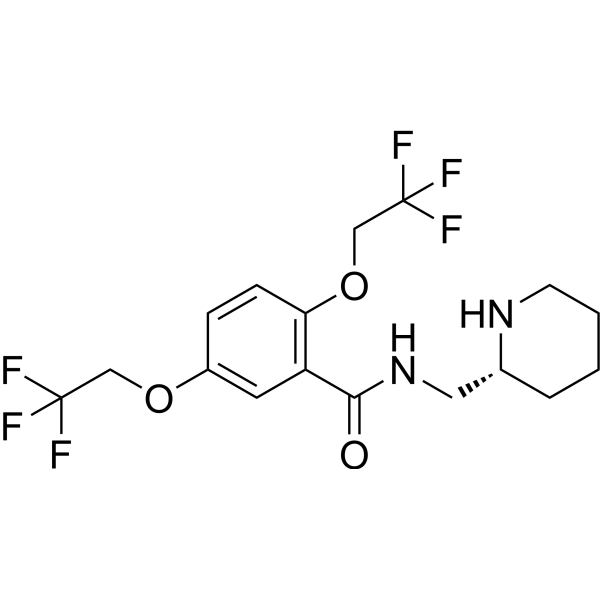
- HY-B0632S
-
|
|
Isotope-Labeled Compounds
Calcium Channel
|
Cardiovascular Disease
|
|
Diltiazem-d6 is the deuterium labeled Diltiazem. Diltiazem is an orally active L-type Ca2+ channel blocker, with antihypertensive and antiarrhythmic effects. Diltiazem can be used for the research of cardiac arrhythmia, hypertension, and angina pectoris[1][2][3].
|
-
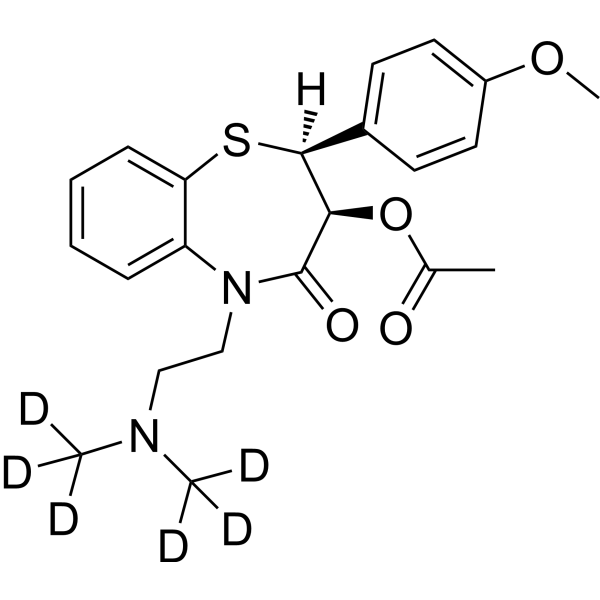
- HY-14304A
-
|
MJ 9184 hydrochloride
|
Adrenergic Receptor
|
Cardiovascular Disease
|
|
Zinterol hydrochloride (MJ 9184 hydrochloride) is a potent and selective β2-adrenoceptor agonist . Zinterol hydrochloride increases ICa in a concentration-dependent manner with an EC50 of 2.2 nM . Zinterol hydrochloride induces ventricular arrhythmias in conscious heart failure rabbits .
|
-
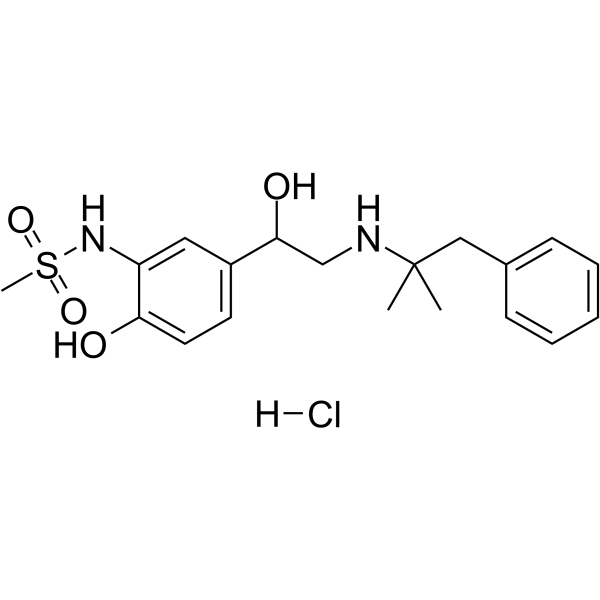
- HY-17497AR
-
|
|
|
Cardiovascular Disease
Endocrinology
|
|
Acebutolol (hydrochloride) (Standard) is the analytical standard of Acebutolol (hydrochloride). This product is intended for research and analytical applications. Acebutolol hydrochloride is an orally active β1 adrenergic receptor (β1AR) antagonist. Acebutolol hydrochloride is used in the treatment of hypertension, angina pectoris and cardiac arrhythmias .
|
-

- HY-A0064
-
|
(±)-Verapamil hydrochloride; CP-16533-1 hydrochloride
|
Calcium Channel
P-glycoprotein
Cytochrome P450
|
Cardiovascular Disease
Cancer
|
|
Verapamil hydrochloride ((±)-Verapamil hydrochloride) is a calcium channel blocker and a potent and orally active first-generation P-glycoprotein (P-gp) inhibitor. Verapamil hydrochloride also inhibits CYP3A4. Verapamil hydrochloride has the potential for high blood pressure, heart arrhythmias and angina research .
|
-
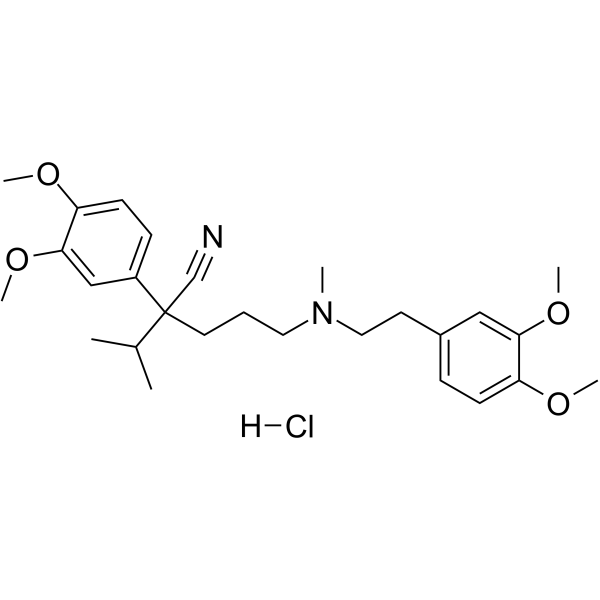
- HY-N0484
-
|
|
Autophagy
Mitophagy
Apoptosis
|
Cardiovascular Disease
Cancer
|
|
Liensinine is an autophagy/mitophagy inhibitor. Liensinine, a major isoquinoline alkaloid, extracted from the seed embryo of Nelumbo nucifera Gaertn, has a wide range of biological activities, including anti-arrhythmias, anti-hypertension, anti-pulmonary fibrosis, relaxation on vascular smooth muscle, etc .
|
-

- HY-14275
-
Verapamil
Maximum Cited Publications
45 Publications Verification
(±)-Verapamil; CP-16533-1
|
Calcium Channel
P-glycoprotein
Cytochrome P450
|
Metabolic Disease
Cancer
|
|
Verapamil ((±)-Verapamil) is a calcium channel blocker and a potent and orally active first-generation P-glycoprotein (P-gp) inhibitor. Verapamil also inhibits CYP3A4. Verapamil has the potential for high blood pressure, heart arrhythmias and angina research .
|
-
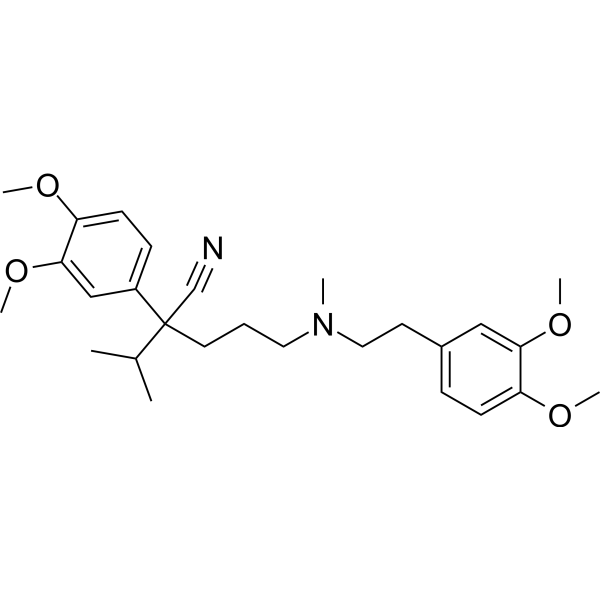
- HY-N8228
-
|
|
Bacterial
|
Infection
Inflammation/Immunology
Cancer
|
|
17-Hydroxyneomatrine, extracted from Sophora flavescens, can well inhibit the growth of human cervical carcinoma Hela cells, has the wide-range antibacterial, anti-allergy, anti-tumor, anti-arrhythmia, swelling-subsiding diuresis, immunizing, and biological regulation functions .
|
-
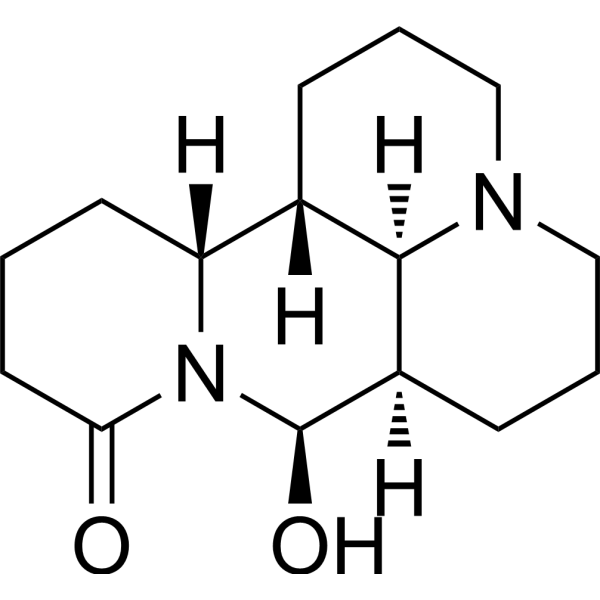
- HY-118628
-
|
ACA
|
Phospholipase
TRP Channel
|
Cardiovascular Disease
|
|
N-(p-amylcinnamoyl) Anthranilic Acid (ACA) is a broad spectrum Phospholipase A2 (PLA2) inhibitor and TRP channel blocker . N-(p-amylcinnamoyl) Anthranilic Acid (ACA) is also an effective reversible inhibitor of calcium-activated chloride channels, has potential to treat arrhythmia .
|
-
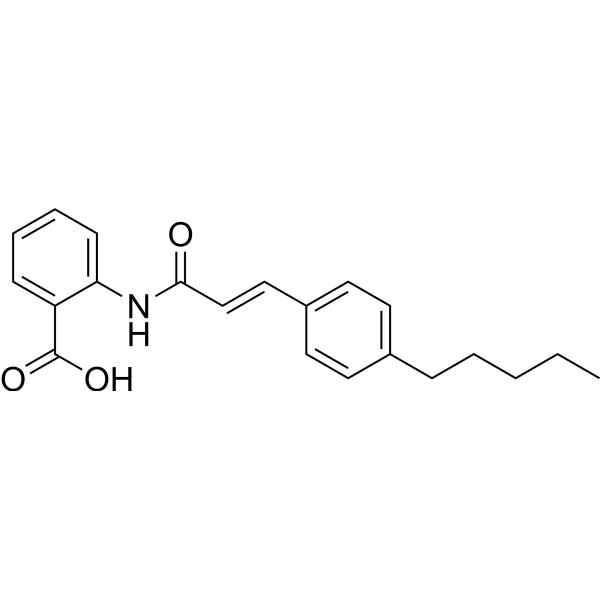
- HY-A0236
-
|
|
Others
|
Cardiovascular Disease
|
|
Aprindine is an arrhythmia inhibitor that stabilizes the cell membranes of heart muscle cells, thereby preventing abnormal electrical impulses from causing irregular heartbeats. In hematological toxicity studies, aprindine showed potential inhibitory effects on the replicative capacity of mouse and human blood cells at certain concentrations .
|
-
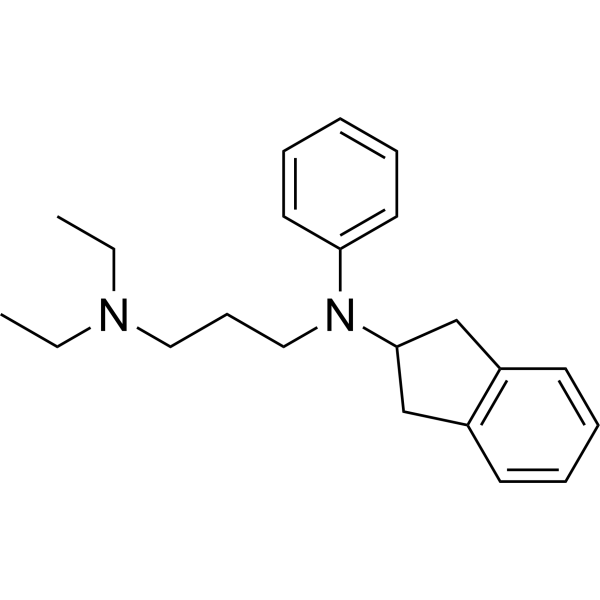
- HY-17429S
-
|
R-818-d4
|
Sodium Channel
|
Cardiovascular Disease
|
|
Flecainide-d4 (acetate) is the deuterium labeled Flecainide acetate. Flecainide acetate (R-818) is a class 1C antiarrhythmic agent especially used for the management of supraventricular arrhythmia; works by blocking the Nav1.5 sodium channel in the heart, causing prolongation of the cardiac action potential[1][2].
|
-

- HY-N10452
-
|
|
Adrenergic Receptor
|
Cardiovascular Disease
|
|
Methyl maslinate is a β-adrenergic antagonist. Methyl maslinate is a potent cardiotonic and antidysrhythmic agent. Methyl maslinate has the potential for hypertension research .
|
-
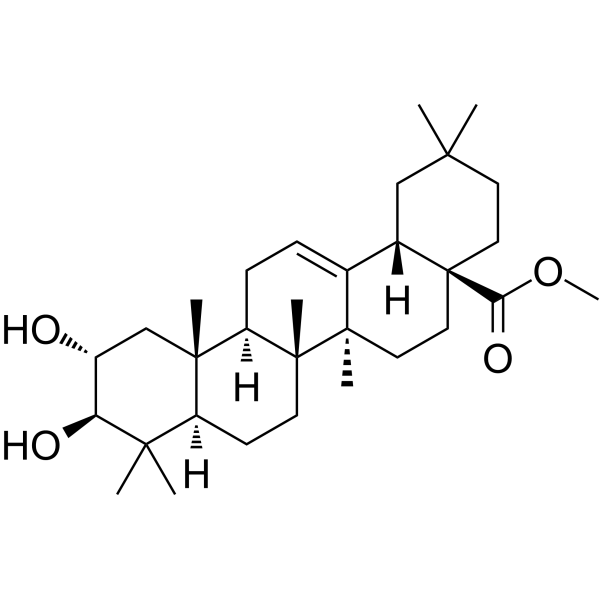
- HY-118406
-
|
Ponalid; UK 738
|
mAChR
|
Neurological Disease
|
|
Ethybenztropine (Ponalid) is a muscarinic receptor blocker. Ethybenztropine is an anticholinergic and antihistaminergic agent .
|
-
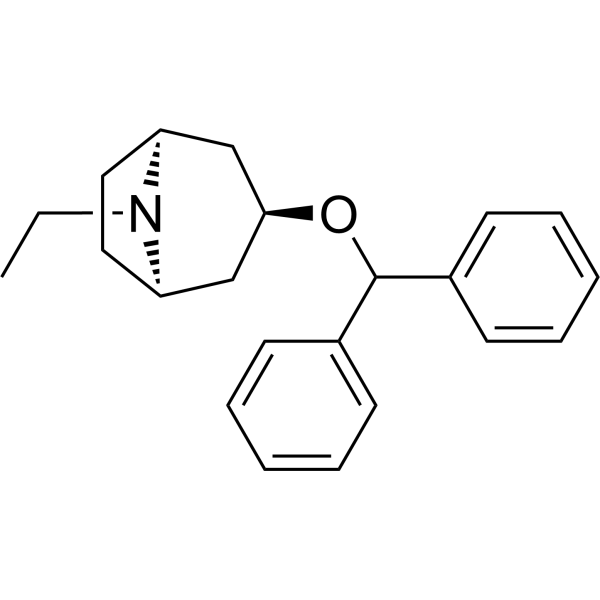
- HY-156976
-
|
|
Calcium Channel
|
Cardiovascular Disease
|
|
Sulcardine is a multi-ion channel blocker that can reduce INa and ICa with IC50 values of 26.9 µmol/L and 69.2µ mol/L, respectively. Sulcardine has anti-arrhythmic effects .
|
-
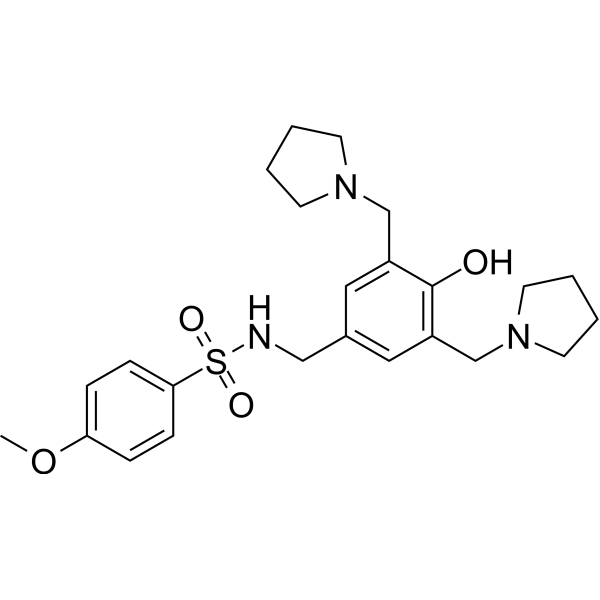
- HY-B0185
-
|
Lignocaine
|
Sodium Channel
MEK
ERK
NF-κB
Apoptosis
|
Cardiovascular Disease
Cancer
|
|
Lidocaine (Lignocaine) inhibits sodium channels involving complex voltage and using dependence . Lidocaine decreases growth, migration and invasion of gastric carcinoma cells via up-regulating miR-145 expression and further inactivation of MEK/ERK and NF-κB signaling pathways. Lidocaine is an amide derivative and has potential for the research of ventricular arrhythmia .
|
-
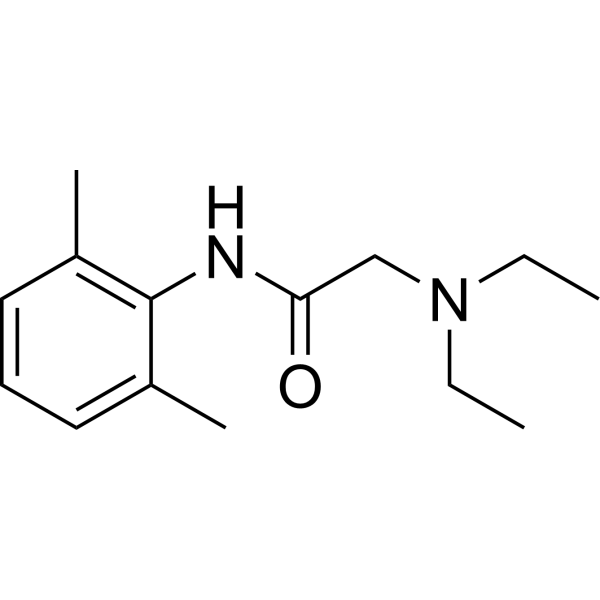
- HY-A0064S
-
|
(±)-Verapamil-d3 hydrochloride; CP-16533-1-d3 hydrochloride
|
Isotope-Labeled Compounds
Calcium Channel
P-glycoprotein
Cytochrome P450
|
Cardiovascular Disease
|
|
Verapamil-d3 (hydrochloride) is the deuterium labeled Verapamil hydrochloride. Verapamil hydrochloride ((±)-Verapamil hydrochloride) is a calcium channel blocker and a potent and orally active first-generation P-glycoprotein (P-gp) inhibitor. Verapamil hydrochloride also inhibits CYP3A4. Verapamil hydrochloride has the potential for high blood pressure, heart arrhythmias and angina research[1][2][3].
|
-

- HY-16952
-
|
(±)-Bepridil; Org 5730
|
Calcium Channel
Sodium Channel
SARS-CoV
|
Infection
Cardiovascular Disease
|
|
Bepridil ((±)-Bepridil) is a calcium channel blocking agent used as antiarrhythmic agent. Bepridil inhibits both calcium and sodium currents, has research potential in certain ischemia-induced ventricular arrhythmias. Bepridil also has strong inhibition of SARS-CoV-2 from entry and replication inside Vero E6 and A549 cells .
|
-
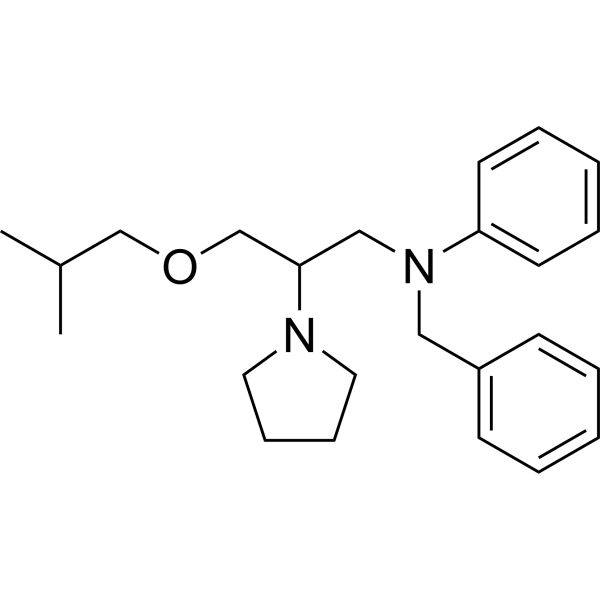
- HY-B0185B
-
|
Lignocaine hydrochloride hydrate
|
Sodium Channel
MEK
ERK
NF-κB
Apoptosis
|
Cardiovascular Disease
Cancer
|
|
Lidocaine (Lignocaine) hydrochloride hydrate inhibits sodium channels involving complex voltage and using dependence. Lidocaine hydrochloride hydrate decreases growth, migration and invasion of gastric carcinoma cells via up-regulating miR-145 expression and further inactivation of MEK/ERK and NF-κB signaling pathways. Lidocaine hydrochloride hydrate is an amide derivative and has potential for the research of ventricular arrhythmia .
|
-
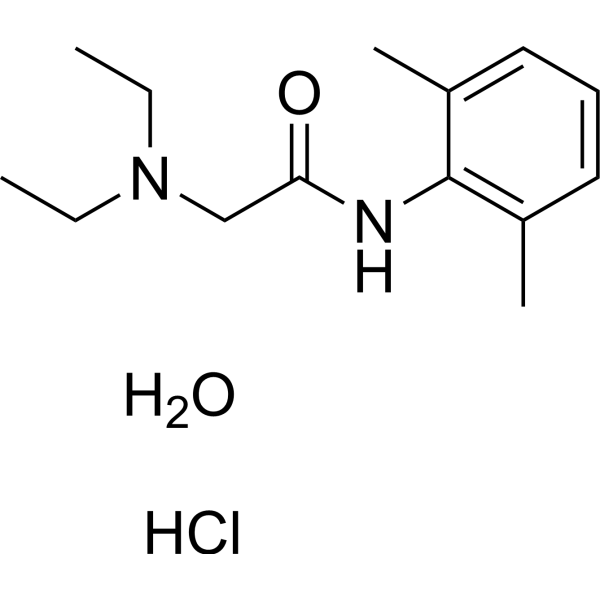
- HY-B2151
-
|
Cerberigenin; Echujetin
|
Biochemical Assay Reagents
|
Others
|
|
Digitoxigenin is a steroid derivative commonly found in various plants, especially the foxglove plant (Digitalis purpurea). Digitoxigenin has unique chemical properties that make it an important precursor for the synthesis of cardiac glycosides, a group of drugs used to improve heart failure and certain types of arrhythmias. It works by inhibiting the sodium potassium ATPase pump, thereby increasing the force and efficiency of cardiac contractions.
|
-

- HY-N2333
-
|
(+)-Resiniferatoxin
|
TRP Channel
|
Cardiovascular Disease
|
|
Resiniferatoxin ((+)-Resiniferatoxin), is a selective agonist of transient receptor potential vanilloid 1 (TRPV1) receptor agonist. Resiniferatoxin can be isolated from the Euphorbia resinifera plant. Resiniferatoxin eliminates TRPV1+ primary sensory afferents and blunt cardiac sympathetic afferent reflex for a relatively long period .
|
-
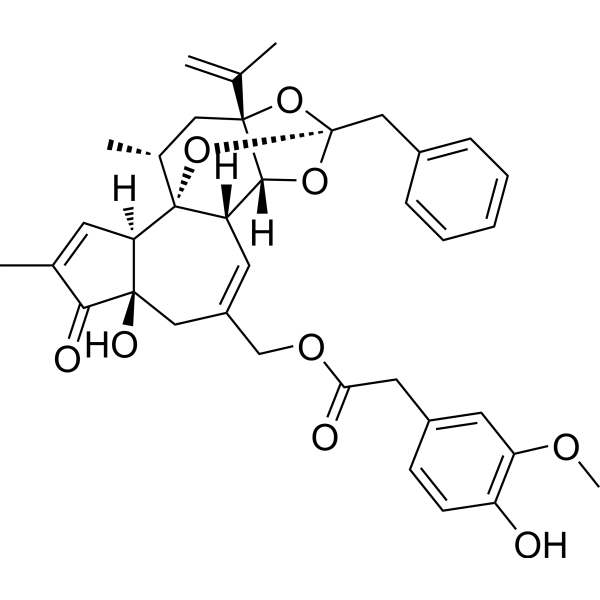
- HY-B0185A
-
|
Lignocaine hydrochloride
|
Sodium Channel
MEK
ERK
NF-κB
Apoptosis
|
Cardiovascular Disease
Cancer
|
|
Lidocaine hydrochloride (Lignocaine hydrochloride) inhibits sodium channels involving complex voltage and using dependence . Lidocaine hydrochloride decreases growth, migration and invasion of gastric carcinoma cells via up-regulating miR-145 expression and further inactivation of MEK/ERK and NF-κB signaling pathways. Lidocaine hydrochloride is an amide derivative and a agent to treat ventricular arrhythmia and an effective tumor-inhibitor .
|
-
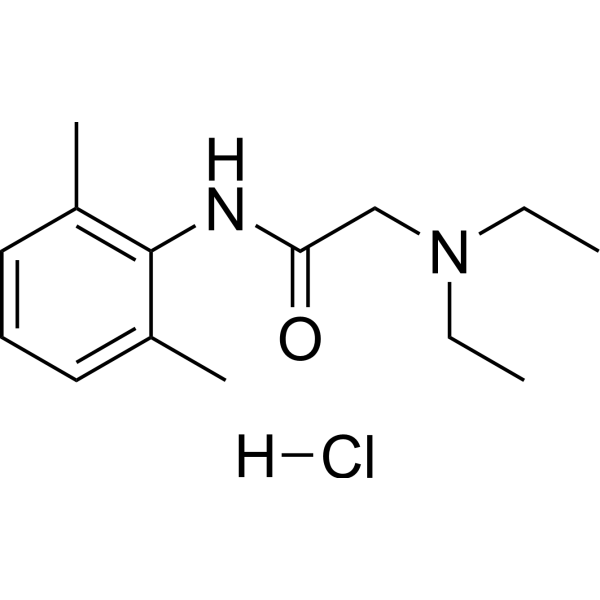
- HY-14275S1
-
-

- HY-A0064R
-
|
(±)-Verapamil hydrochloride (Standard); CP-16533-1 hydrochloride (Standard)
|
Calcium Channel
P-glycoprotein
Cytochrome P450
|
Cardiovascular Disease
Cancer
|
|
Verapamil (hydrochloride) (Standard) is the analytical standard of Verapamil (hydrochloride). This product is intended for research and analytical applications. Verapamil hydrochloride ((±)-Verapamil hydrochloride) is a calcium channel blocker and a potent and orally active first-generation P-glycoprotein (P-gp) inhibitor. Verapamil hydrochloride also inhibits CYP3A4. Verapamil hydrochloride has the potential for high blood pressure, heart arrhythmias and angina research .
|
-
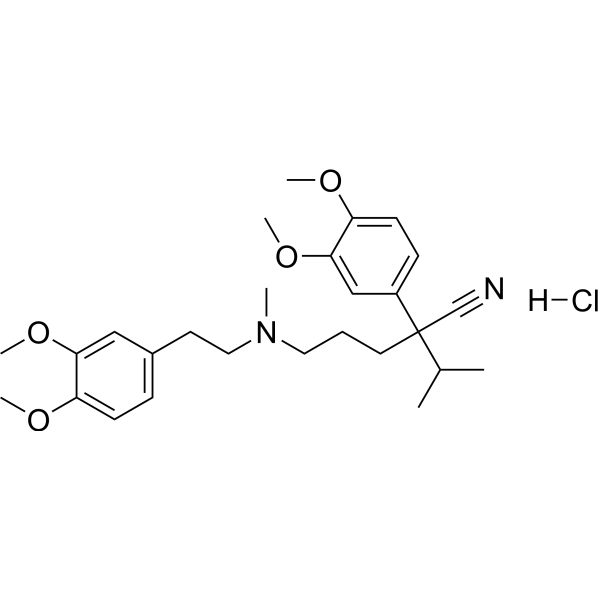
- HY-B1030
-
|
|
Flavivirus
Dengue virus
Autophagy
Enterovirus
|
Cardiovascular Disease
Cancer
|
|
Lanatoside C is a cardiac glycoside, can be used in the treatment of congestive heart failure and cardiac arrhythmia.Lanatoside C has an IC50 of 0.19 μM for dengue virus infection in HuH-7 cells. Lanatoside C can effectively inhibit all four serotypes of dengue virus, flavivirus Kunjin, alphavirus Chikungunya, Sindbis virus and the human enterovirus 71 .
|
-
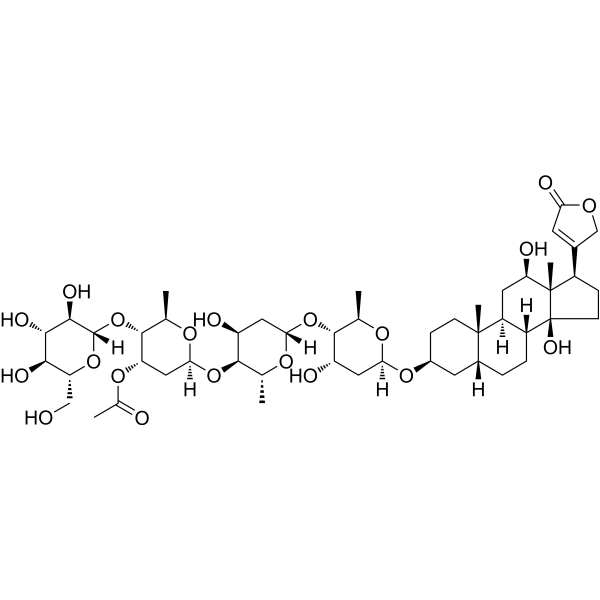
- HY-15292
-
S107
1 Publications Verification
|
Others
|
Cardiovascular Disease
|
|
S107 is an orally available, blood brain barrier-permeable compound, which stabilizes RyR2 channels by enhancing the binding of calstabin 2 to the mutant Ryr2-R2474S channel. S107 inhibits Ca 2+ leakage from the sarcoplasmic reticulum (SR) and prevents cardiac arrhythmias and raises the seizure threshold .
|
-
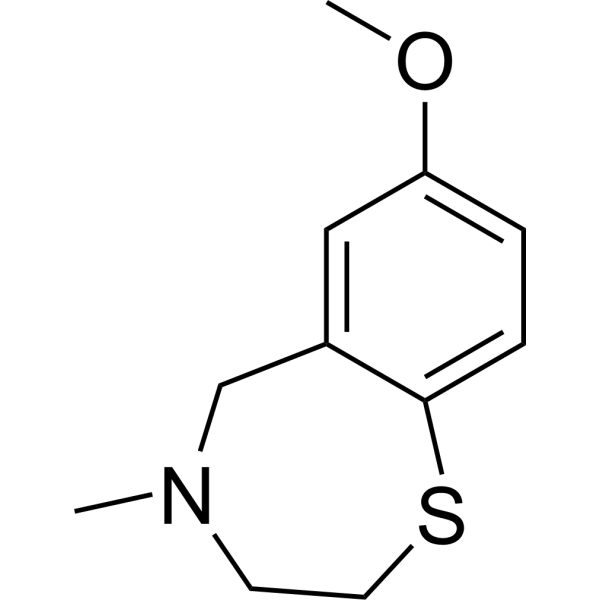
- HY-N0485
-
|
|
Autophagy
Mitophagy
|
Cardiovascular Disease
|
|
Liensinine Diperchlorate is a major isoquinoline alkaloid, extracted from the seed embryo of Nelumbo nucifera Gaertn. Liensinine Diperchlorate inhibits late-stage autophagy/mitophagy through blocking autophagosome-lysosome fusion. Liensinine Diperchlorate has a wide range of biological activities, including anti-arrhythmias, anti-hypertension, anti-pulmonary fibrosis, relaxation on vascular smooth muscle, etc .
|
-
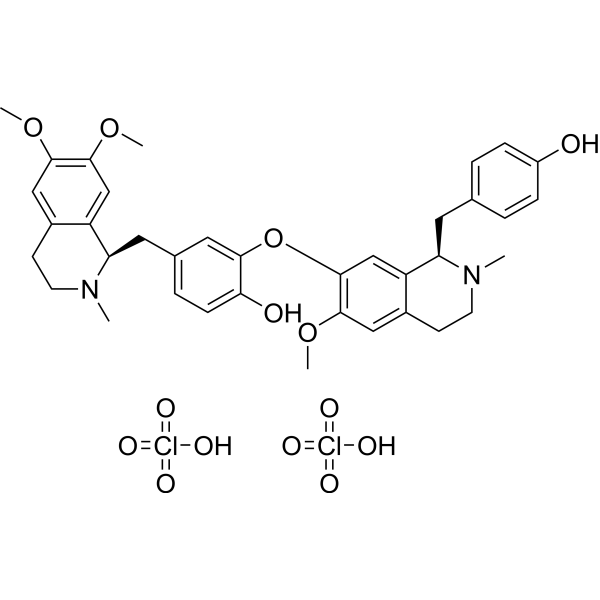
- HY-14188R
-
|
|
Potassium Channel
Autophagy
|
Cardiovascular Disease
Cancer
|
|
Amiodarone (hydrochloride) (Standard) is the analytical standard of Amiodarone (hydrochloride). This product is intended for research and analytical applications. Amiodarone hydrochloride, a benzofuran-based Class III antiarrhythmic agent, inhibits WT outwardIhERG tails with an IC50 of ∼45 nM . Amiodarone hydrochloride induces cell proliferation and myofibroblast differentiation via ERK1/2 and p38 MAPK signaling in fibroblasts . Amiodarone hydrochloride can be used in the research of both supraventricular and ventricular arrhythmias .
|
-

- HY-N7971
-
|
|
Endogenous Metabolite
|
Cardiovascular Disease
|
|
2-Hydroxy-1-Methoxyaporphine is an alkaloid that can be isolated from Nelumbo nucifera. 2-Hydroxy-1-Methoxyaporphine is the major active ingredient of the Chinese traditional medicine Jiang-Zhi-Ning .
|
-
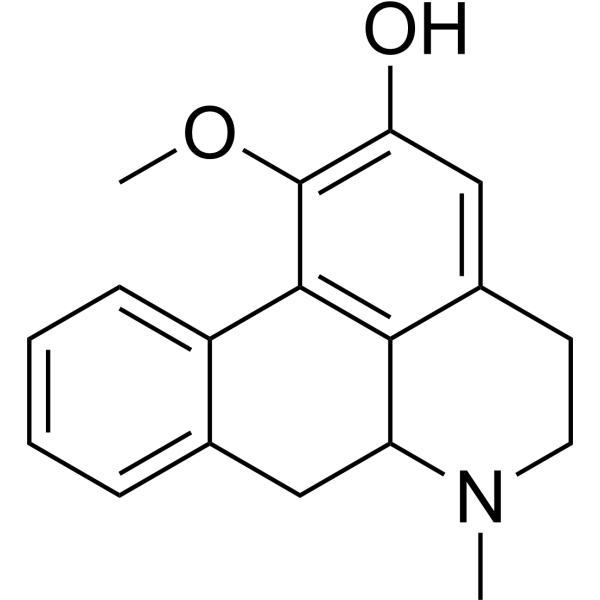
- HY-B0185R
-
|
Lignocaine (Standard)
|
Sodium Channel
MEK
ERK
NF-κB
Apoptosis
|
Cardiovascular Disease
Cancer
|
|
Lidocaine (Standard) is the analytical standard of Lidocaine. This product is intended for research and analytical applications. Lidocaine (Lignocaine) inhibits sodium channels involving complex voltage and using dependence . Lidocaine decreases growth, migration and invasion of gastric carcinoma cells via up-regulating miR-145 expression and further inactivation of MEK/ERK and NF-κB signaling pathways. Lidocaine is an amide derivative and has potential for the research of ventricular arrhythmia .
|
-
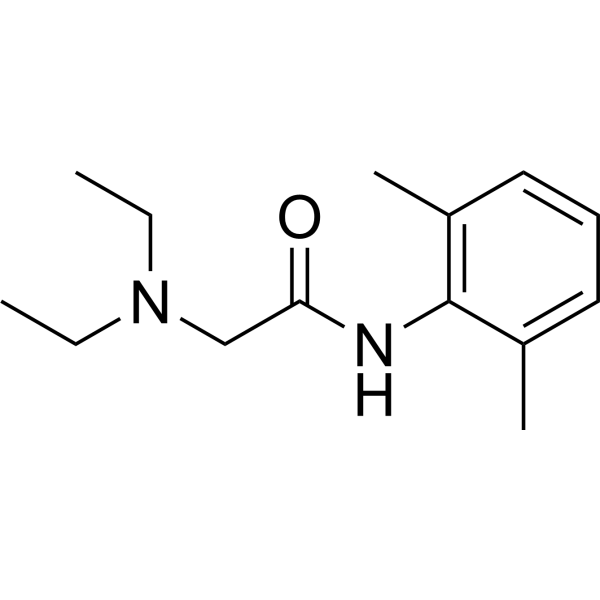
- HY-B0185AS1
-
|
Lignocaine-d6 hydrochloride
|
Sodium Channel
MEK
ERK
NF-κB
Apoptosis
|
Cardiovascular Disease
Cancer
|
|
Lidocaine-d6 (hydrochloride) is deuterium labeled Lidocaine (hydrochloride). Lidocaine hydrochloride (Lignocaine hydrochloride) inhibits sodium channels involving complex voltage and using dependence[1]. Lidocaine hydrochloride decreases growth, migration and invasion of gastric carcinoma cells via up-regulating miR-145 expression and further inactivation of MEK/ERK and NF-κB signaling pathways. Lidocaine hydrochloride is an amide derivative and a agent to treat ventricular arrhythmia and an effective tumor-inhibitor[2].
|
-

- HY-A0064S1
-
|
(±)-Verapamil-d6 hydrochloride; CP-16533-1-d6 hydrochloride
|
Isotope-Labeled Compounds
|
Cardiovascular Disease
|
|
Verapamil-d6 (CP-16533-1-d6) hydrochloride is the deuterium labled Verapamil (hydrochloride) (HY-A0064). Verapamil hydrochloride ((±)-Verapamil hydrochloride) is a calcium channel blocker and a potent and orally active first-generation P-glycoprotein (P-gp) inhibitor. Verapamil hydrochloride also inhibits CYP3A4. Verapamil hydrochloride has the potential for high blood pressure, heart arrhythmias and angina research .
|
-
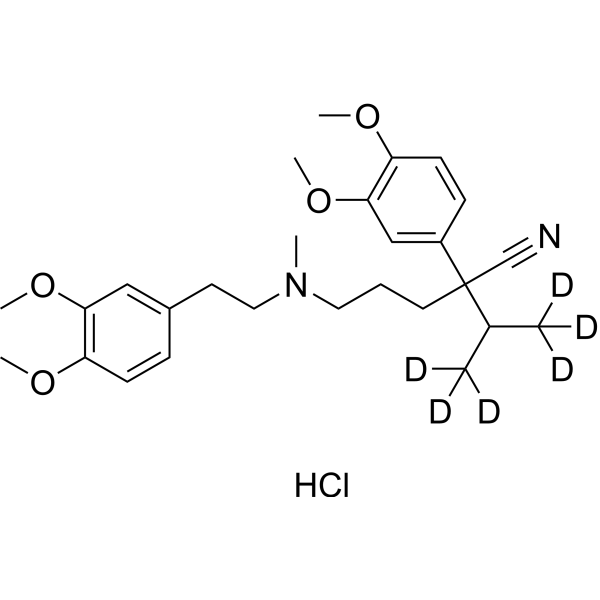
- HY-B0573
-
|
|
Adrenergic Receptor
Bacterial
|
Neurological Disease
Endocrinology
Cancer
|
|
Propranolol hydrochloride is a nonselective β-adrenergic receptor (βAR) antagonist, has high affinity for the β1AR and β2AR with Ki values of 1.8 nM and 0.8 nM, respectively . Propranolol hydrochloride inhibits [ 3H]-DHA binding to rat brain membrane preparation with an IC50 of 12 nM . Propranolol hydrochloride is used for study of hypertension, pheochromocytoma, myocardial infarction, cardiac arrhythmias, angina pectoris, and hypertrophic cardiomyopathy .
|
-

- HY-B0573B
-
|
|
Adrenergic Receptor
Bacterial
|
Cardiovascular Disease
Neurological Disease
Endocrinology
Cancer
|
|
Propranolol is a nonselective β-adrenergic receptor (βAR) antagonist, has high affinity for the β1AR and β2AR with Ki values of 1.8 nM and 0.8 nM, respectively . Propranolol inhibits [ 3H]-DHA binding to rat brain membrane preparation with an IC50 of 12 nM . Propranolol is used for the study of hypertension, pheochromocytoma, myocardial infarction, cardiac arrhythmias, angina pectoris, and hypertrophic cardiomyopathy .
|
-
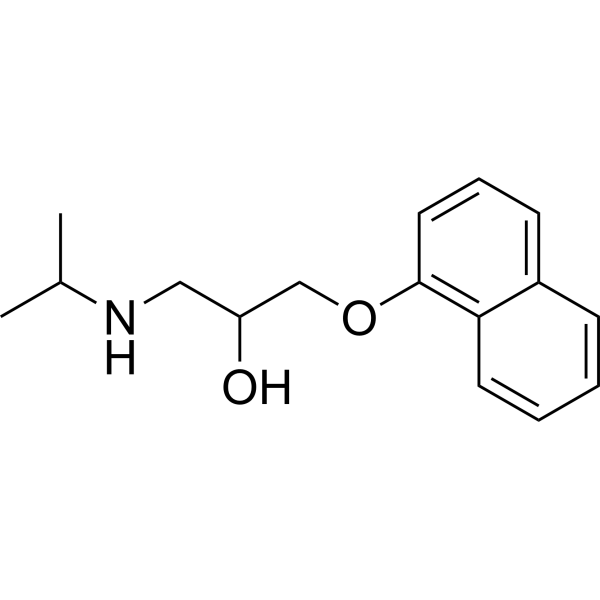
- HY-B1030R
-
|
|
Dengue virus
Flavivirus
Autophagy
Enterovirus
|
Cardiovascular Disease
Cancer
|
|
Lanatoside C (Standard) is the analytical standard of Lanatoside C. This product is intended for research and analytical applications. Lanatoside C is a cardiac glycoside, can be used in the treatment of congestive heart failure and cardiac arrhythmia.Lanatoside C has an IC50 of 0.19 μM for dengue virus infection in HuH-7 cells. Lanatoside C can effectively inhibit all four serotypes of dengue virus, flavivirus Kunjin, alphavirus Chikungunya, Sindbis virus and the human enterovirus 71 .
|
-

- HY-108351
-
|
|
Necroptosis
|
Cardiovascular Disease
|
|
IM-54 is a selective inhibitor of oxidative stress-induced necrosis. IM-54 shows potent inhibitory activity against H2O2-induced necrosis. IM-54 acts as a potential cardioprotective agent and biological tool for investigating the molecular mechanisms of cell death .
|
-
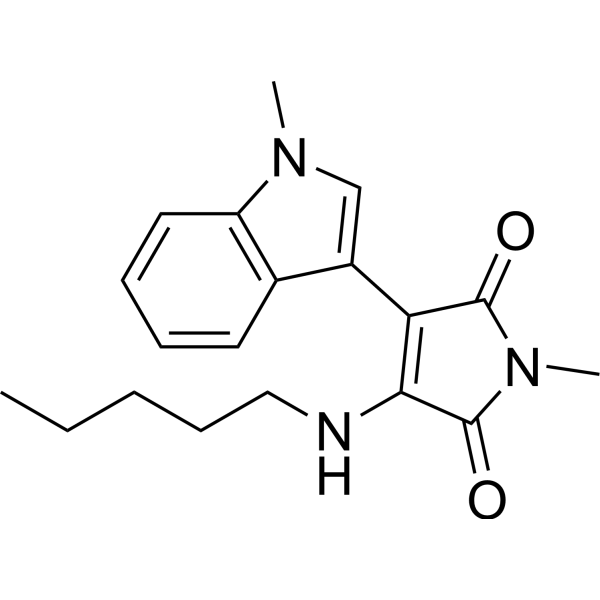
- HY-14186
-
|
WYE-160020
|
Potassium Channel
|
Cardiovascular Disease
|
|
KVI-020 is an orally active, potent and selective blocker of the atrial potassium channel Kv1.5, with an IC50 of 480 nM. KVI-020 can inhibits hERG, with an IC50 of 15100 nM. KVI-020 is a potent antiarrhythmic agent, and can be used for atrial fibrillation (AF) research .
|
-
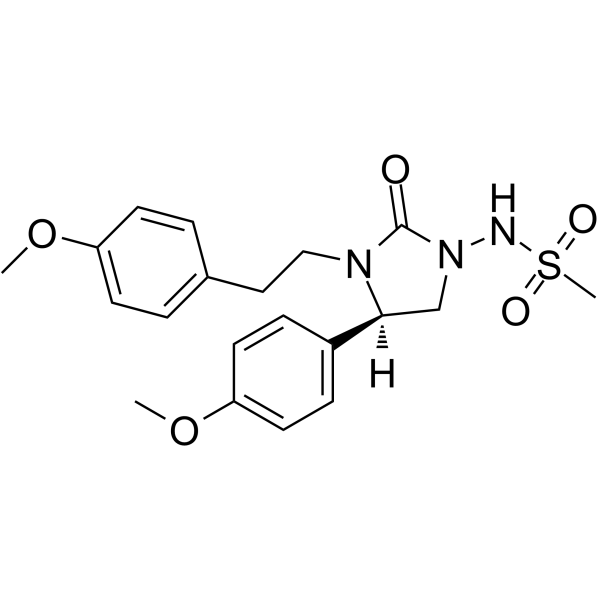
- HY-B0185G
-
|
Lignocaine
|
Apoptosis
Sodium Channel
MEK
ERK
NF-κB
|
Cancer
|
|
Lidocaine (GMP) is Lidocaine (HY-B0185) produced by using GMP guidelines. GMP small molecules work appropriately as an auxiliary reagent for cell therapy manufacture. Lidocaine inhibits sodium channels involving complex voltage and using dependence . Lidocaine decreases growth, migration and invasion of gastric carcinoma cells via up-regulating miR-145 expression and further inactivation of MEK/ERK and NF-κB signaling pathways. Lidocaine is an amide derivative and has potential for the research of ventricular arrhythmia .
|
-
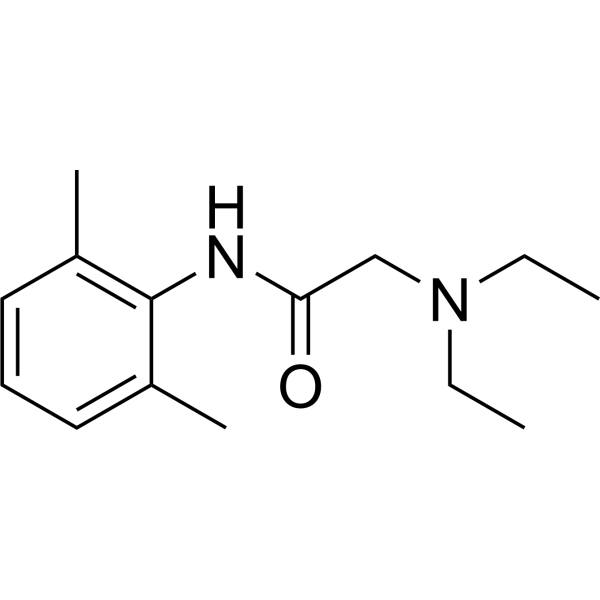
- HY-B0573R
-
|
|
Adrenergic Receptor
Bacterial
|
Neurological Disease
Endocrinology
Cancer
|
|
Propranolol (hydrochloride) (Standard) is the analytical standard of Propranolol (hydrochloride). This product is intended for research and analytical applications. Propranolol hydrochloride is a nonselective β-adrenergic receptor (βAR) antagonist, has high affinity for the β1AR and β2AR with Ki values of 1.8 nM and 0.8 nM, respectively . Propranolol hydrochloride inhibits [ 3H]-DHA binding to rat brain membrane preparation with an IC50 of 12 nM . Propranolol hydrochloride is used for study of hypertension, pheochromocytoma, myocardial infarction, cardiac arrhythmias, angina pectoris, and hypertrophic cardiomyopathy .
|
-

- HY-B0573BS
-
|
|
Adrenergic Receptor
|
Cardiovascular Disease
Neurological Disease
Endocrinology
|
|
Propranolol-d7 is the deuterium labeled Propranolol. Propranolol is a nonselective β-adrenergic receptor (βAR) antagonist, has high affinity for the β1AR and β2AR with Ki values of 1.8 nM and 0.8 nM, respectively[1]. Propranolol inhibits [3H]-DHA binding to rat brain membrane preparation with an IC50 of 12 nM[2]. Propranolol is used for the study of hypertension, pheochromocytoma, myocardial infarction, cardiac arrhythmias, angina pectoris, and hypertrophic cardiomyopathy[3].
|
-
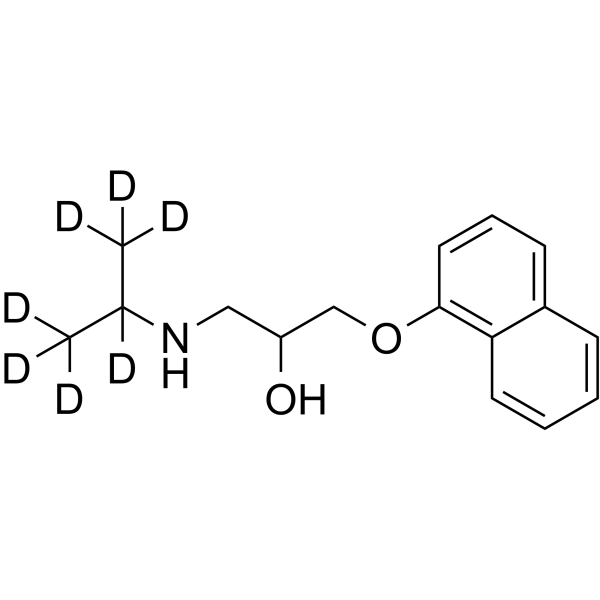
- HY-B0573S
-
|
|
Adrenergic Receptor
|
Cardiovascular Disease
Neurological Disease
Endocrinology
|
|
Propranolol-d7 (hydrochloride) is a deuterium labeled Propranolol hydrochloride. Propranolol hydrochloride is a nonselective β-adrenergic receptor (βAR) antagonist, has high affinity for the β1AR and β2AR with Ki values of 1.8 nM and 0.8 nM, respectively[1]. Propranolol hydrochloride inhibits [3H]-DHA binding to rat brain membrane preparation with an IC50 of 12 nM[2]. Propranolol hydrochloride is used for the study of hypertension, pheochromocytoma, myocardial infarction, cardiac arrhythmias, angina pectoris, and hypertrophic cardiomyopathy[3].
|
-

- HY-119152
-
|
|
Insulin Receptor
Tyrosinase
Akt
|
Others
|
|
CMX-2043 is a novel analogue of α-Lipoic Acid (HY-N0492). CMX-2043 is effective in antioxidant effect, activation of insulin receptor kinase, soluble tyrosine kinase, and Akt phosphorylation. CMX-2043 shows protection against ischemia-reperfusion injury (IRI) in rat model .
|
-
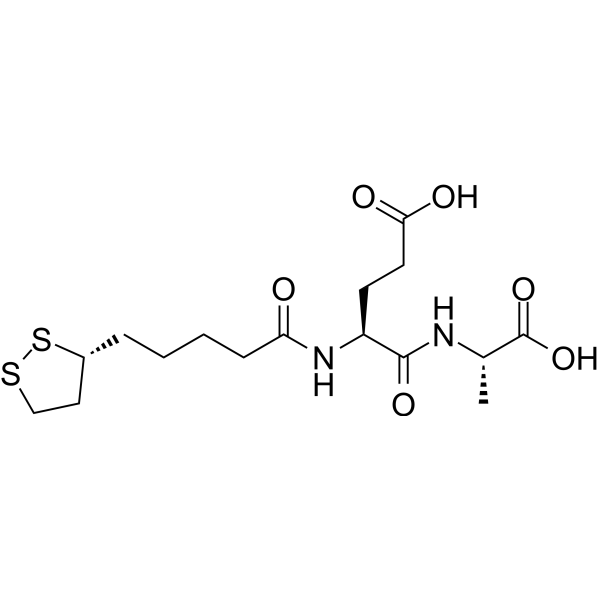
- HY-B0573S1
-
|
|
Adrenergic Receptor
|
Neurological Disease
Endocrinology
|
|
Propranolol-d7 (ring-d7) is the deuterium labeled Propranolol hydrochloride. Propranolol hydrochloride is a nonselective β-adrenergic receptor (βAR) antagonist, has high affinity for the β1AR and β2AR with Ki values of 1.8 nM and 0.8 nM, respectively[1]. Propranolol hydrochloride inhibits [3H]-DHA binding to rat brain membrane preparation with an IC50 of 12 nM[2]. Propranolol hydrochloride is used for study of hypertension, pheochromocytoma, myocardial infarction, cardiac arrhythmias, angina pectoris, and hypertrophic cardiomyopathy[3].
|
-
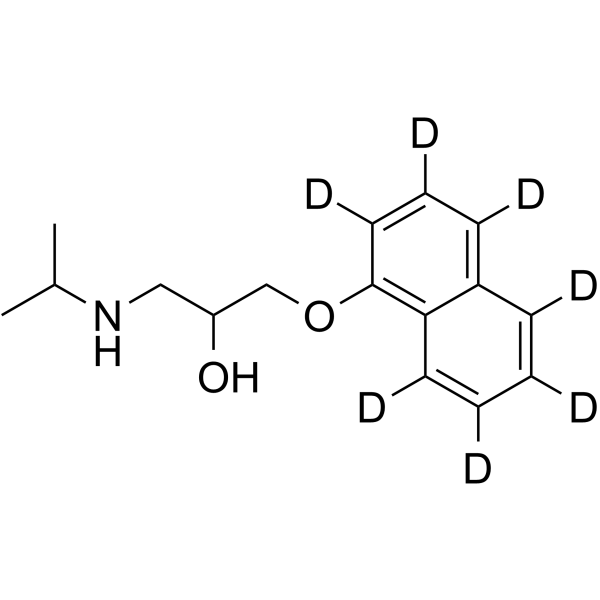
- HY-B1486
-
|
Ba 39089
|
Adrenergic Receptor
|
Cardiovascular Disease
|
|
Oxprenolol hydrochloride (Ba 39089) is an orally bioavailable β-adrenergic receptor (β-AR) antagonist with a Ki of 7.10 nM in a radioligand binding assay using rat heart muscle .
|
-
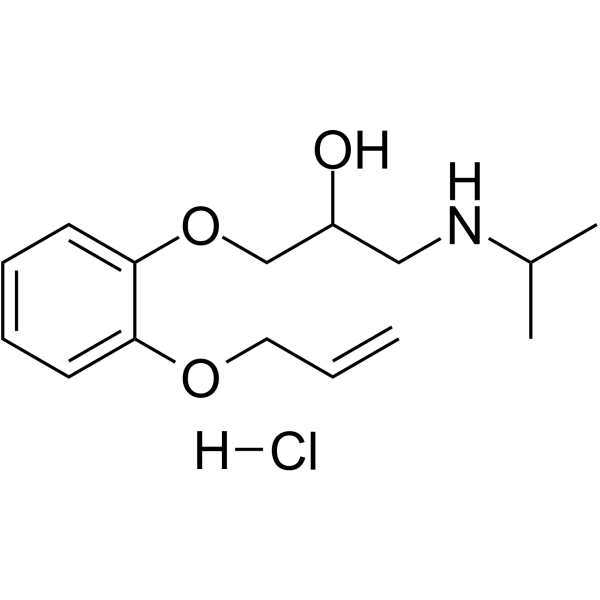
- HY-112544
-
|
PA-6
|
Potassium Channel
|
Cardiovascular Disease
|
|
IK1 inhibitor PA-6 (PA-6), a pentamidine analogue, is a selective and potent IK1 (KIR2.x ion-channel-carried inward rectifier current) inhibitor, with IC50 values of 12-15 nM for human and mouse KIR2.x currents. IK1 inhibitor PA-6 (PA-6) elevates KIR2.1 protein expression and induces intracellular KIR2.1 accumulation. IK1 inhibitor PA-6 (PA-6) has the potential to treat atrial fibrillation and arrhythmia .
|
-
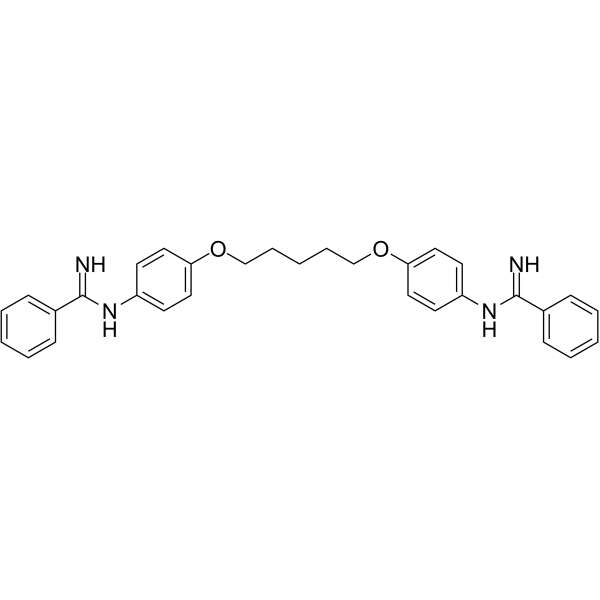
- HY-N0716B
-
-
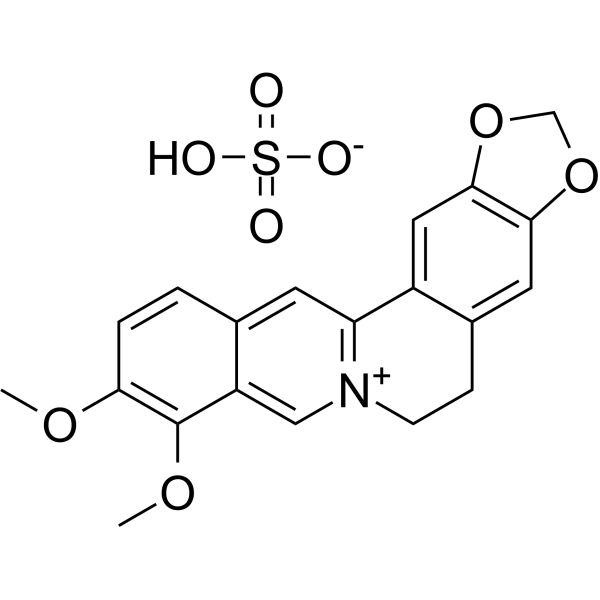
- HY-17412
-
-

- HY-N0716
-
-

- HY-17412A
-
-

- HY-N0716A
-
-

-
-
HY-L118
-
|
|
129 compounds
|
|
Sodium channels conduct sodium ions (Na+) through a cell's plasma membrane that are the source of excitatory currents for the nervous system and muscle. Na channels are classified according to the trigger that opens the channel for such ions, i.e. either a voltage-change (Voltage-gated, voltage-sensitive, or voltage-dependent sodium channel also called VGSCs or Nav channel) or a binding of a substance (a ligand) to the channel (ligand-gated sodium channels). Dysfunction in voltage-gated sodium channels correlates with neurological and cardiac diseases, including epilepsy, myopathies, pain and cardiac arrhythmias. Sodium channel blockers are used in the treatment of cardiac arrhythmia, pain and convulsion.
MCE offers a unique collection of 129 sodium channel blocker and antagonists, all of which have the identified inhibitory effect on sodium channels. MCE Sodium Channel Blocker Library can be used for neurological and cardiac diseases drug discovery and sodium channel research.
|
| Cat. No. |
Product Name |
Type |
-
- HY-B0185G
-
|
Lignocaine (GMP)
|
Fluorescent Dye
|
|
Lidocaine (GMP) is Lidocaine (HY-B0185) produced by using GMP guidelines. GMP small molecules work appropriately as an auxiliary reagent for cell therapy manufacture. Lidocaine inhibits sodium channels involving complex voltage and using dependence . Lidocaine decreases growth, migration and invasion of gastric carcinoma cells via up-regulating miR-145 expression and further inactivation of MEK/ERK and NF-κB signaling pathways. Lidocaine is an amide derivative and has potential for the research of ventricular arrhythmia .
|
| Cat. No. |
Product Name |
Type |
-
- HY-107754
-
|
|
Biochemical Assay Reagents
|
|
Cesium chloride is a blocker of potassium channel. Cesium chloride prevents the decrease of Na + transport produced by Alloxan . Cesium chloride has induced cardiac arrhythmias, including torsade de pointes in animal models .
|
-
- HY-B2151
-
|
Cerberigenin; Echujetin
|
Biochemical Assay Reagents
|
|
Digitoxigenin is a steroid derivative commonly found in various plants, especially the foxglove plant (Digitalis purpurea). Digitoxigenin has unique chemical properties that make it an important precursor for the synthesis of cardiac glycosides, a group of drugs used to improve heart failure and certain types of arrhythmias. It works by inhibiting the sodium potassium ATPase pump, thereby increasing the force and efficiency of cardiac contractions.
|
-
- HY-B0185G
-
|
Lignocaine (GMP)
|
Biochemical Assay Reagents
|
|
Lidocaine (GMP) is Lidocaine (HY-B0185) produced by using GMP guidelines. GMP small molecules work appropriately as an auxiliary reagent for cell therapy manufacture. Lidocaine inhibits sodium channels involving complex voltage and using dependence . Lidocaine decreases growth, migration and invasion of gastric carcinoma cells via up-regulating miR-145 expression and further inactivation of MEK/ERK and NF-κB signaling pathways. Lidocaine is an amide derivative and has potential for the research of ventricular arrhythmia .
|
| Cat. No. |
Product Name |
Target |
Research Area |
-
- HY-119152
-
|
|
Insulin Receptor
Tyrosinase
Akt
|
Others
|
|
CMX-2043 is a novel analogue of α-Lipoic Acid (HY-N0492). CMX-2043 is effective in antioxidant effect, activation of insulin receptor kinase, soluble tyrosine kinase, and Akt phosphorylation. CMX-2043 shows protection against ischemia-reperfusion injury (IRI) in rat model .
|
-
- HY-P5153
-
|
μ-TRTX-Tp1a
|
Sodium Channel
|
Neurological Disease
|
|
ProTx-III is a selective and potent inhibitor of voltage-gated sodium channel Nav1.7, with an IC50 of 2.1 nM. ProTx-III is a spider venom peptide isolated from the venom of the Peruvian green velvet tarantella. ProTx-III has a typical inhibitor cystine knot motif (ICK). ProTx-III is able to reverse the pain response. ProTx-III can be used to study diseases such as chronic pain, epilepsy, and arrhythmia .
|
-
- HY-P3834
-
|
|
Peptides
|
Cardiovascular Disease
|
|
Antiarrhythmic peptide (cattle atrium), a hexapeptide, shows a protective effect against experimental agent induced arrhythmias .
|
| Cat. No. |
Product Name |
Category |
Target |
Chemical Structure |
| Cat. No. |
Product Name |
Chemical Structure |
-
- HY-17497S
-
|
|
|
Acebutolol-d7 is a deuterium labeled Acebutolol. Acebutolol is a selective β1 adrenergic receptor antagonist used in the treatment of hypertension, angina pectoris and cardiac arrhythmias[1].
|
-

-
- HY-B0432AS2
-
|
|
|
Propafenone-d5 (hydrochloride) is the deuterium labeled Propafenone hydrochloride. Propafenone (SA-79) hydrochloride is a class of anti-arrhythmic medication, which treats illnesses associated with rapid heart beats such as atrial and ventricular arrhythmias[1].
|
-

-
- HY-B0432AS4
-
|
|
|
Propafenone-(phenyl-dd5) (hydrochloride) is the deuterium labeled Propafenone hydrochloride[1]. Propafenone hydrochloride is a class of anti-arrhythmic medication, which treats illnesses associated with rapid heart beats such as atrial and ventricular arrhythmias[2].
|
-

-
- HY-B0432AS3
-
|
|
|
Propafenone-d5 Ethyl (hydrochloride) is the deuterium labeled Propafenone hydrochloride. Propafenone (SA-79)hydrochloride is a class of anti-arrhythmic medication, which treats illnesses associated with rapid heart beats such as atrial and ventricular arrhythmias[1].
|
-

-
- HY-119802S
-
|
|
|
Practolol-d7 is the deuterium labeled Practolol. Practolol is a potent and selective β1-adrenergic receptor antagonist. Practolol can be used for the research of cardiac arrhythmias[1][2][3].
|
-

-
- HY-A0084S
-
|
|
|
Procainamide-d4 hydrochloride is deuterated labeled Procainamide. Procainamide hydrochloride is an antiarrhythmic agent used in the study of cardiac arrhythmias.
|
-

-
- HY-A0084S1
-
|
|
|
Procainamide- 13C2 hydrochloride is 13C labeled Procainamide. Procainamide hydrochloride is an antiarrhythmic agent used in the study of cardiac arrhythmias.
|
-

-
- HY-B0185AS
-
|
|
|
Lidocaine-d10 (hydrochloride) is the deuterium labeled Lidocaine hydrochloride. Lidocaine hydrochloride (Lignocaine hydrochloride) inhibits sodium channels involving complex voltage and using dependence[1]. Lidocaine hydrochloride decreases growth, migration and invasion of gastric carcinoma cells via up-regulating miR-145 expression and further inactivation of MEK/ERK and NF-κB signaling pathways. Lidocaine hydrochloride, an amide derivative, has the potential for the research of the ventricular arrhythmia[2].
|
-

-
- HY-14188S
-
|
|
|
Amiodarone-d4 (hydrochloride) is the deuterium labeled Amiodarone hydrochloride. Amiodarone hydrochloride, a benzofuran-based Class III antiarrhythmic agent, inhibits WT outwardIhERG tails with an IC50 of ∼45 nM[1]. Amiodarone hydrochloride induces cell proliferation and myofibroblast differentiation via ERK1/2 and p38 MAPK signaling in fibroblasts[2]. Amiodarone hydrochloride can be used in the research of both supraventricular and ventricular arrhythmias[1].
|
-

-
- HY-B0185S1
-
|
|
|
Lidocaine-d10 is the deuterium labeled Lidocaine. Lidocaine (Lignocaine) inhibits sodium channels involving complex voltage and using dependence[1]. Lidocaine decreases growth, migration and invasion of gastric carcinoma cells via up-regulating miR-145 expression and further inactivation of MEK/ERK and NF-κB signaling pathways. Lidocaine is an amide derivative and has potential for the research of ventricular arrhythmia[2].
|
-

-
- HY-B0185S
-
|
|
|
N-Oxide Lidocaine-d10 is the deuterium labeled Lidocaine. Lidocaine (Lignocaine) inhibits sodium channels involving complex voltage and using dependence[1]. Lidocaine decreases growth, migration and invasion of gastric carcinoma cells via up-regulating miR-145 expression and further inactivation of MEK/ERK and NF-κB signaling pathways. Lidocaine is an amide derivative and has potential for the research of ventricular arrhythmia[2].
|
-

-
- HY-B0632S
-
|
|
|
Diltiazem-d6 is the deuterium labeled Diltiazem. Diltiazem is an orally active L-type Ca2+ channel blocker, with antihypertensive and antiarrhythmic effects. Diltiazem can be used for the research of cardiac arrhythmia, hypertension, and angina pectoris[1][2][3].
|
-

-
- HY-17429S
-
|
|
|
Flecainide-d4 (acetate) is the deuterium labeled Flecainide acetate. Flecainide acetate (R-818) is a class 1C antiarrhythmic agent especially used for the management of supraventricular arrhythmia; works by blocking the Nav1.5 sodium channel in the heart, causing prolongation of the cardiac action potential[1][2].
|
-

-
- HY-A0064S
-
|
|
|
Verapamil-d3 (hydrochloride) is the deuterium labeled Verapamil hydrochloride. Verapamil hydrochloride ((±)-Verapamil hydrochloride) is a calcium channel blocker and a potent and orally active first-generation P-glycoprotein (P-gp) inhibitor. Verapamil hydrochloride also inhibits CYP3A4. Verapamil hydrochloride has the potential for high blood pressure, heart arrhythmias and angina research[1][2][3].
|
-

-
- HY-14275S1
-
|
|
|
Verapamil-d7 is the deuterium labeled Verapamil (HY-14275). Verapamil ((±)-Verapamil) is a calcium channel blocker and a potent and orally active first-generation P-glycoprotein (P-gp) inhibitor. Verapamil also inhibits CYP3A4. Verapamil has the potential for high blood pressure, heart arrhythmias and angina research .
|
-

-
- HY-B0185AS1
-
|
|
|
Lidocaine-d6 (hydrochloride) is deuterium labeled Lidocaine (hydrochloride). Lidocaine hydrochloride (Lignocaine hydrochloride) inhibits sodium channels involving complex voltage and using dependence[1]. Lidocaine hydrochloride decreases growth, migration and invasion of gastric carcinoma cells via up-regulating miR-145 expression and further inactivation of MEK/ERK and NF-κB signaling pathways. Lidocaine hydrochloride is an amide derivative and a agent to treat ventricular arrhythmia and an effective tumor-inhibitor[2].
|
-

-
- HY-A0064S1
-
|
|
|
Verapamil-d6 (CP-16533-1-d6) hydrochloride is the deuterium labled Verapamil (hydrochloride) (HY-A0064). Verapamil hydrochloride ((±)-Verapamil hydrochloride) is a calcium channel blocker and a potent and orally active first-generation P-glycoprotein (P-gp) inhibitor. Verapamil hydrochloride also inhibits CYP3A4. Verapamil hydrochloride has the potential for high blood pressure, heart arrhythmias and angina research .
|
-

-
- HY-B0573BS
-
|
|
|
Propranolol-d7 is the deuterium labeled Propranolol. Propranolol is a nonselective β-adrenergic receptor (βAR) antagonist, has high affinity for the β1AR and β2AR with Ki values of 1.8 nM and 0.8 nM, respectively[1]. Propranolol inhibits [3H]-DHA binding to rat brain membrane preparation with an IC50 of 12 nM[2]. Propranolol is used for the study of hypertension, pheochromocytoma, myocardial infarction, cardiac arrhythmias, angina pectoris, and hypertrophic cardiomyopathy[3].
|
-

-
- HY-B0573S
-
|
|
|
Propranolol-d7 (hydrochloride) is a deuterium labeled Propranolol hydrochloride. Propranolol hydrochloride is a nonselective β-adrenergic receptor (βAR) antagonist, has high affinity for the β1AR and β2AR with Ki values of 1.8 nM and 0.8 nM, respectively[1]. Propranolol hydrochloride inhibits [3H]-DHA binding to rat brain membrane preparation with an IC50 of 12 nM[2]. Propranolol hydrochloride is used for the study of hypertension, pheochromocytoma, myocardial infarction, cardiac arrhythmias, angina pectoris, and hypertrophic cardiomyopathy[3].
|
-

-
- HY-B0573S1
-
|
|
|
Propranolol-d7 (ring-d7) is the deuterium labeled Propranolol hydrochloride. Propranolol hydrochloride is a nonselective β-adrenergic receptor (βAR) antagonist, has high affinity for the β1AR and β2AR with Ki values of 1.8 nM and 0.8 nM, respectively[1]. Propranolol hydrochloride inhibits [3H]-DHA binding to rat brain membrane preparation with an IC50 of 12 nM[2]. Propranolol hydrochloride is used for study of hypertension, pheochromocytoma, myocardial infarction, cardiac arrhythmias, angina pectoris, and hypertrophic cardiomyopathy[3].
|
-

Your information is safe with us. * Required Fields.
Inquiry Information
- Product Name:
- Cat. No.:
- Quantity:
- MCE Japan Authorized Agent:


























































































































